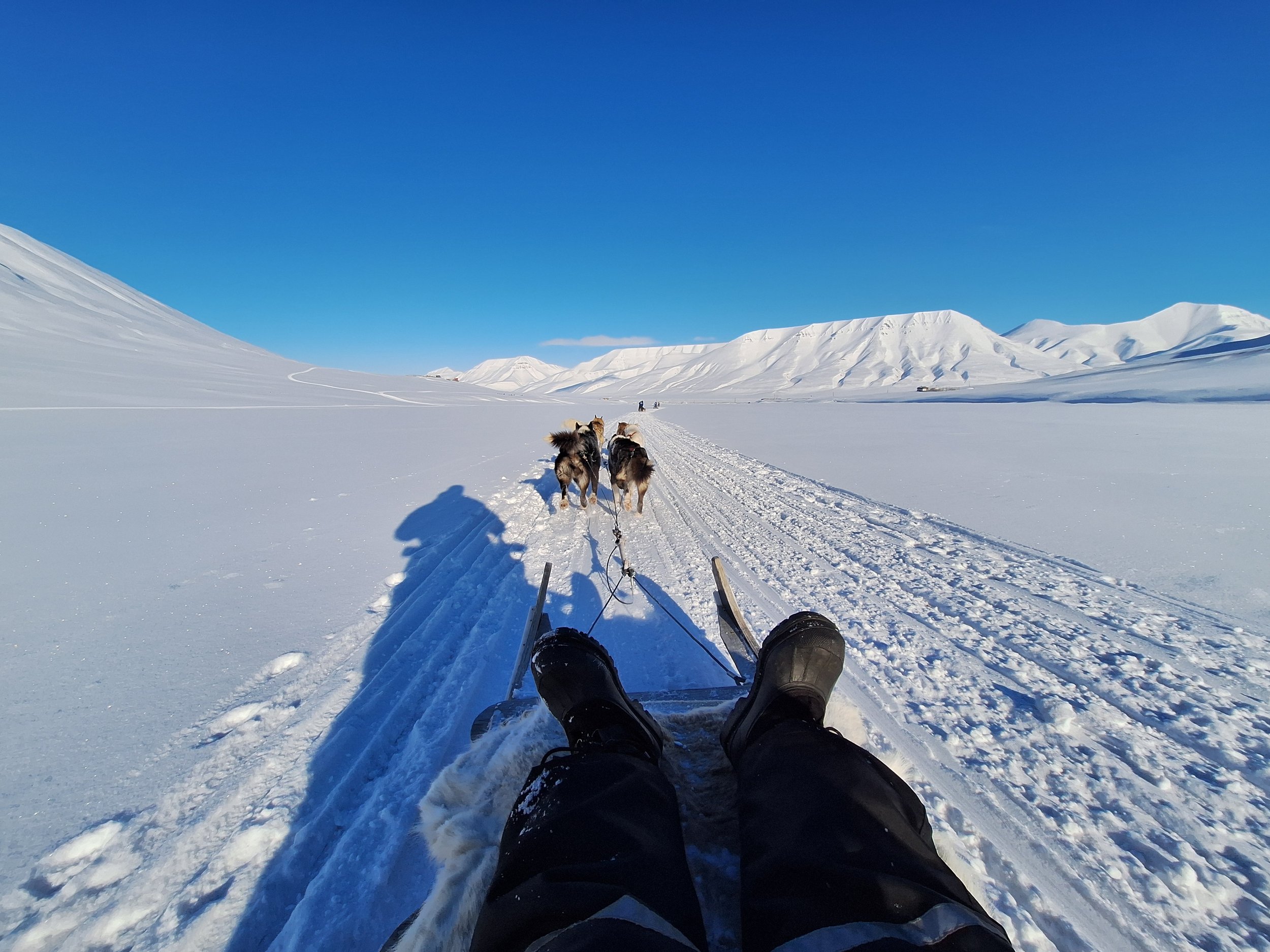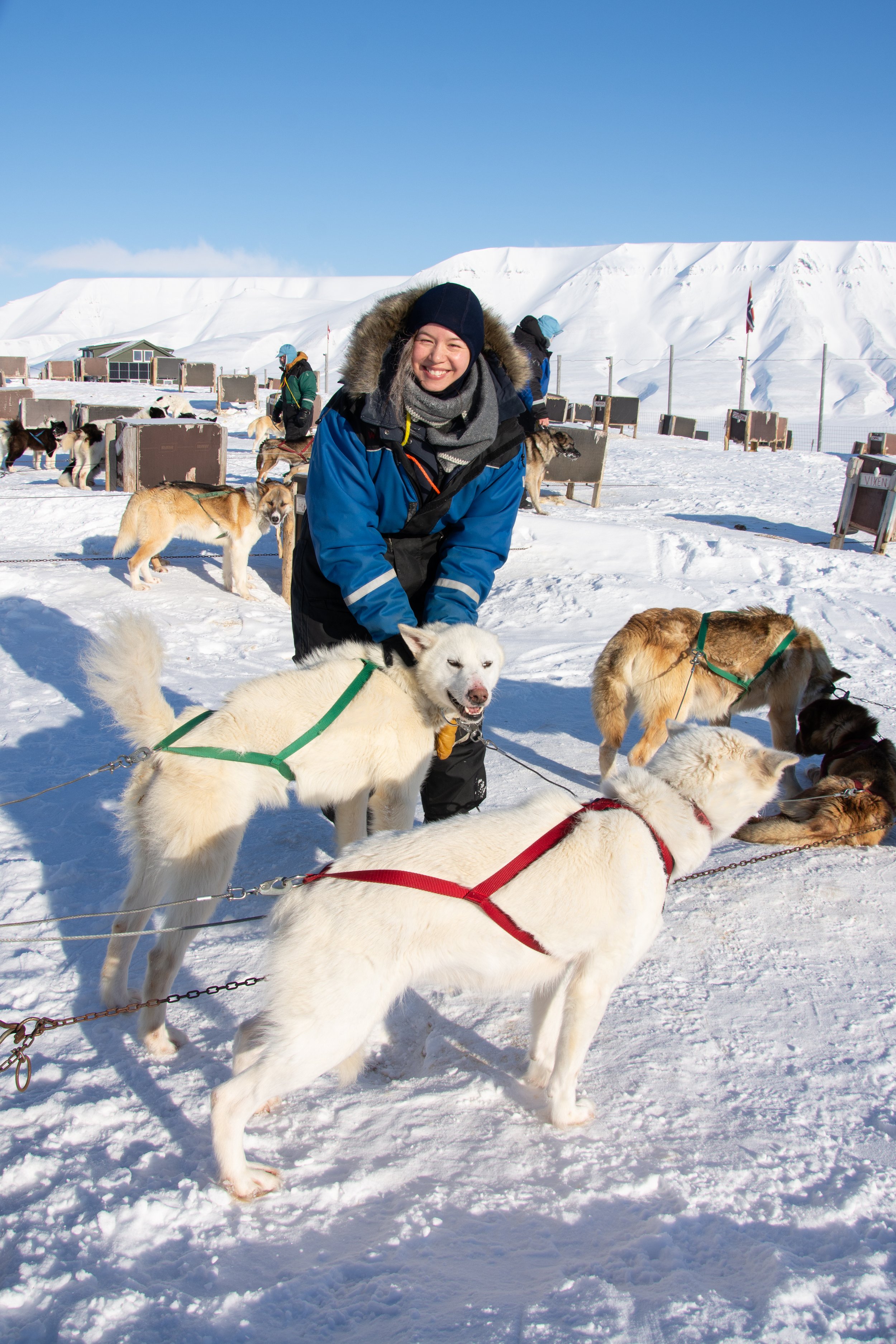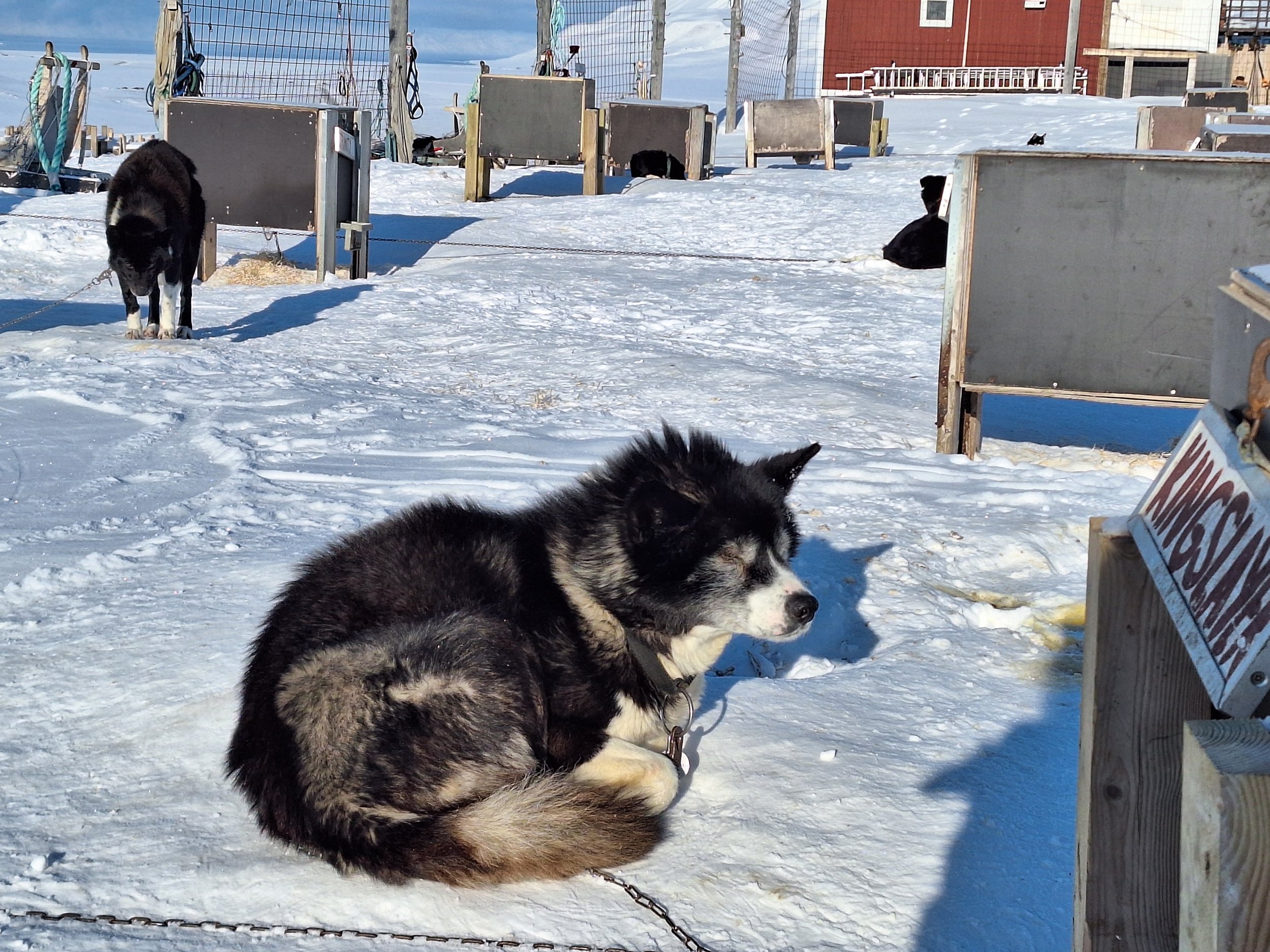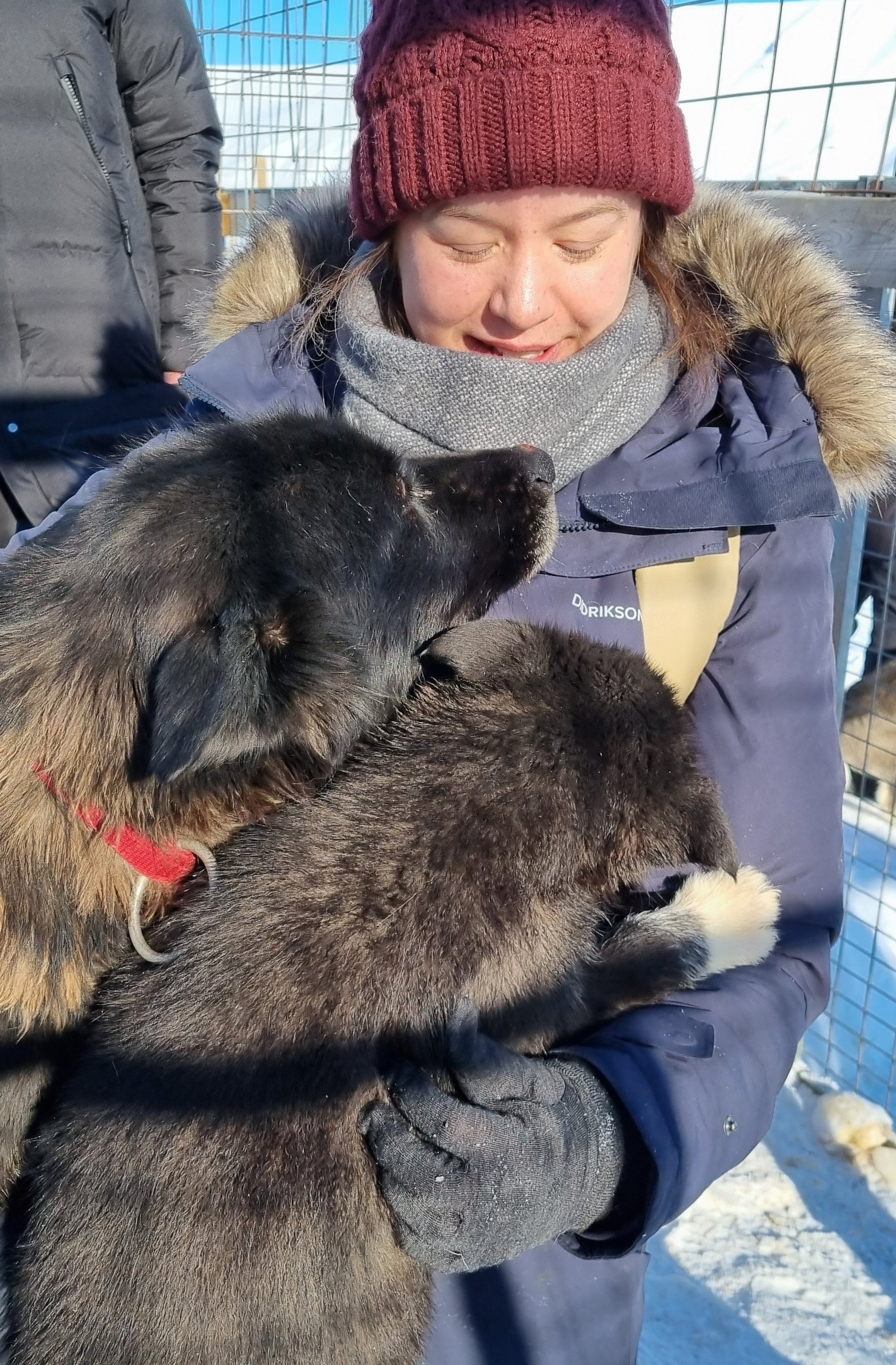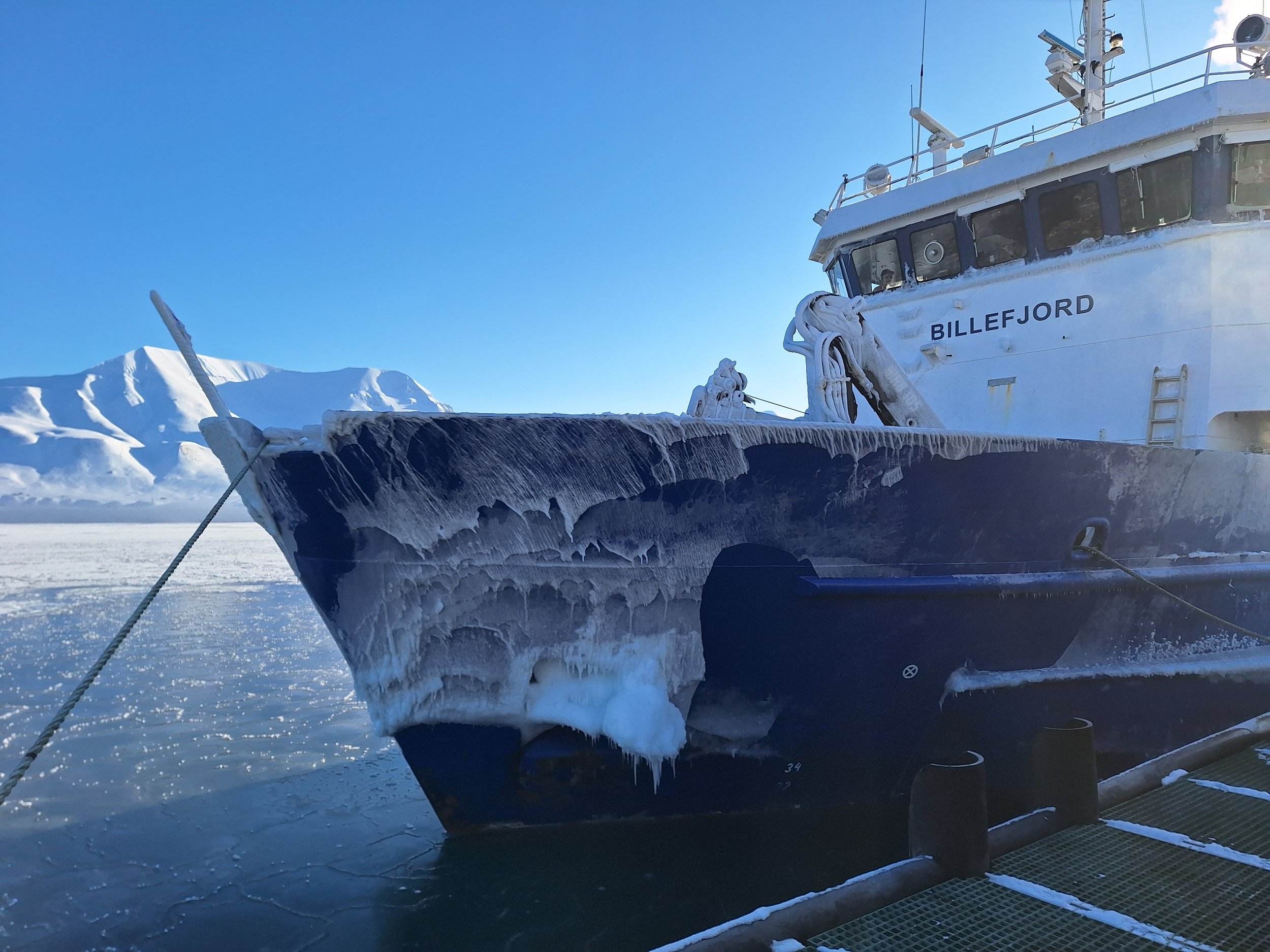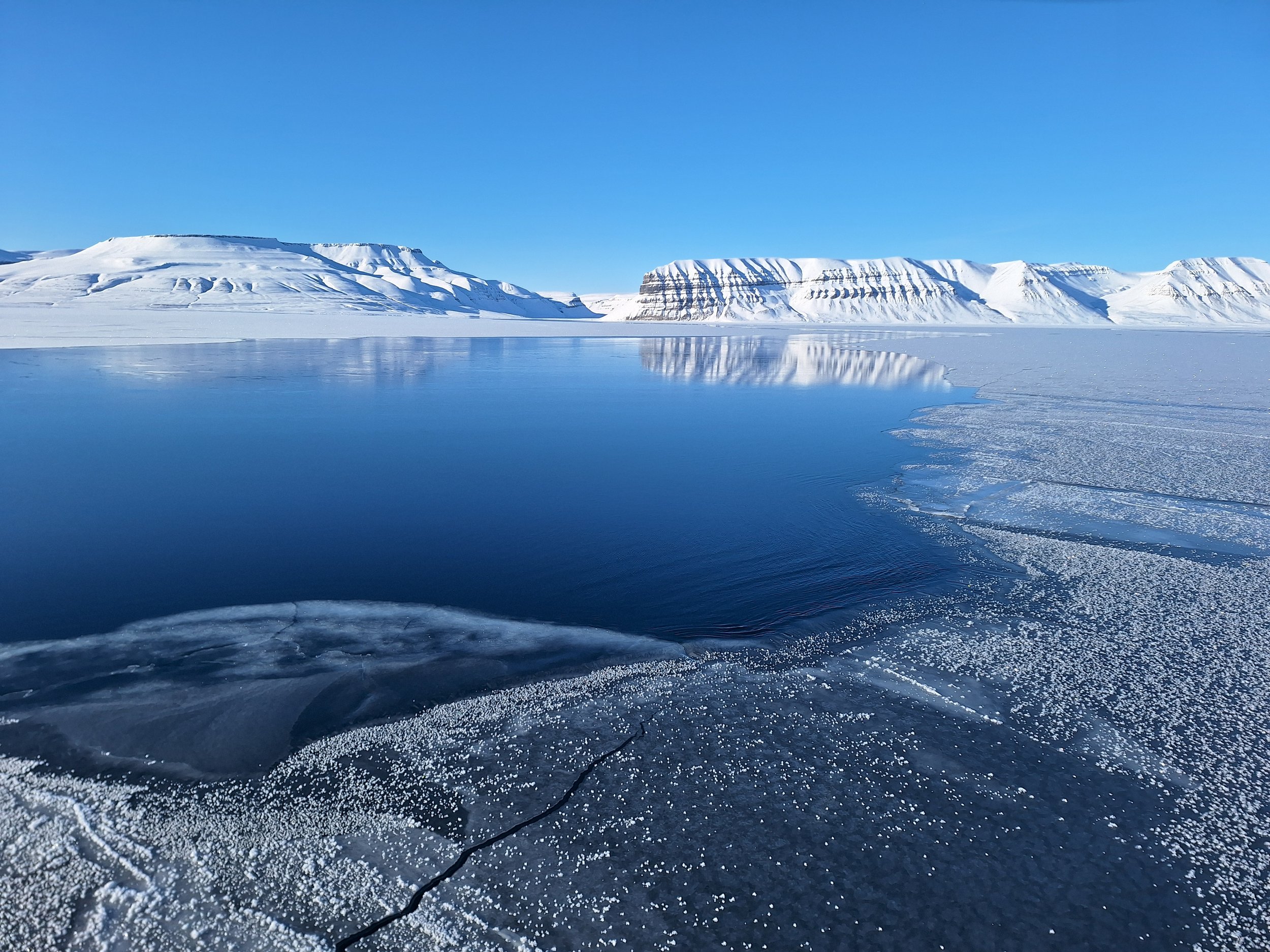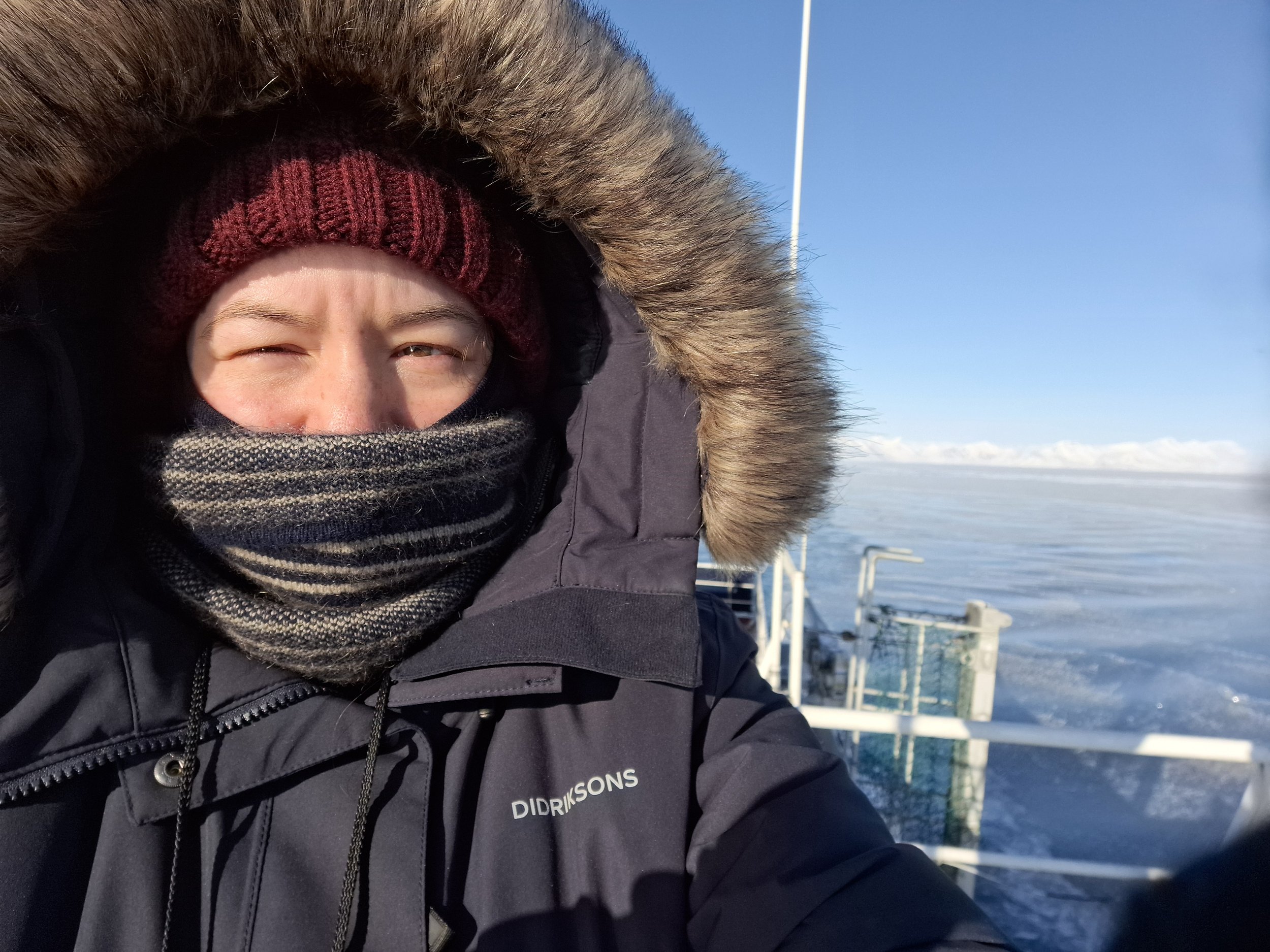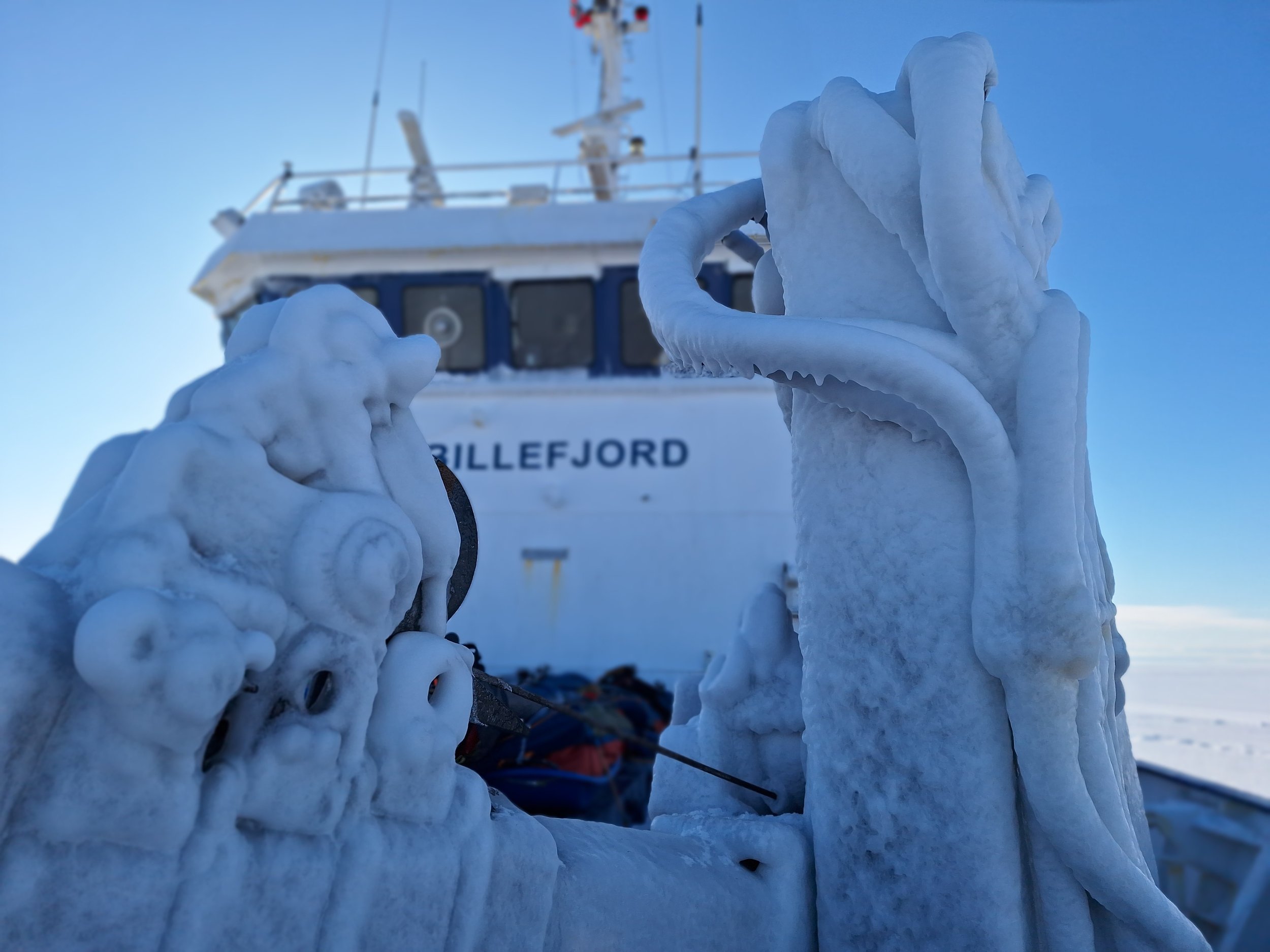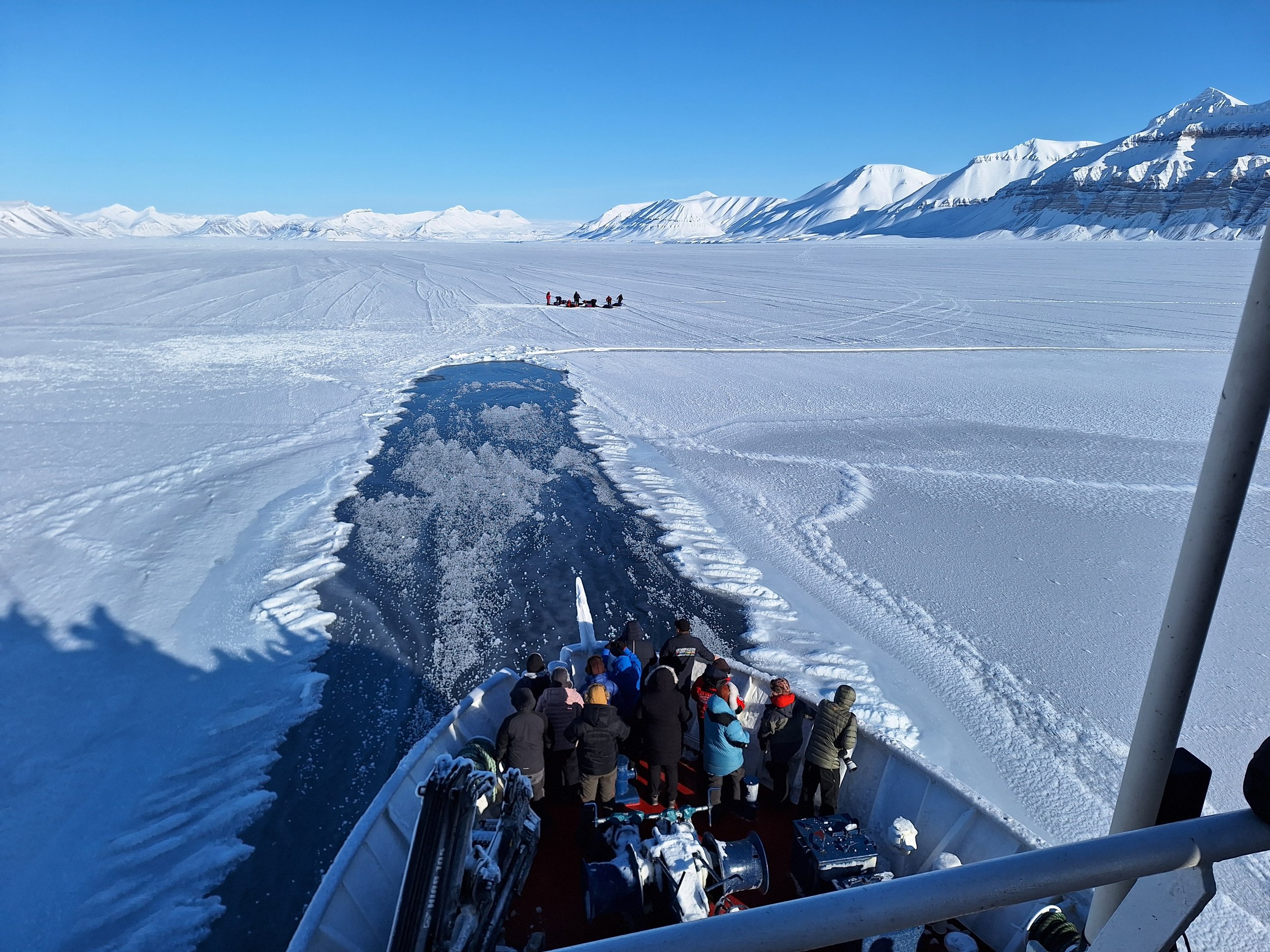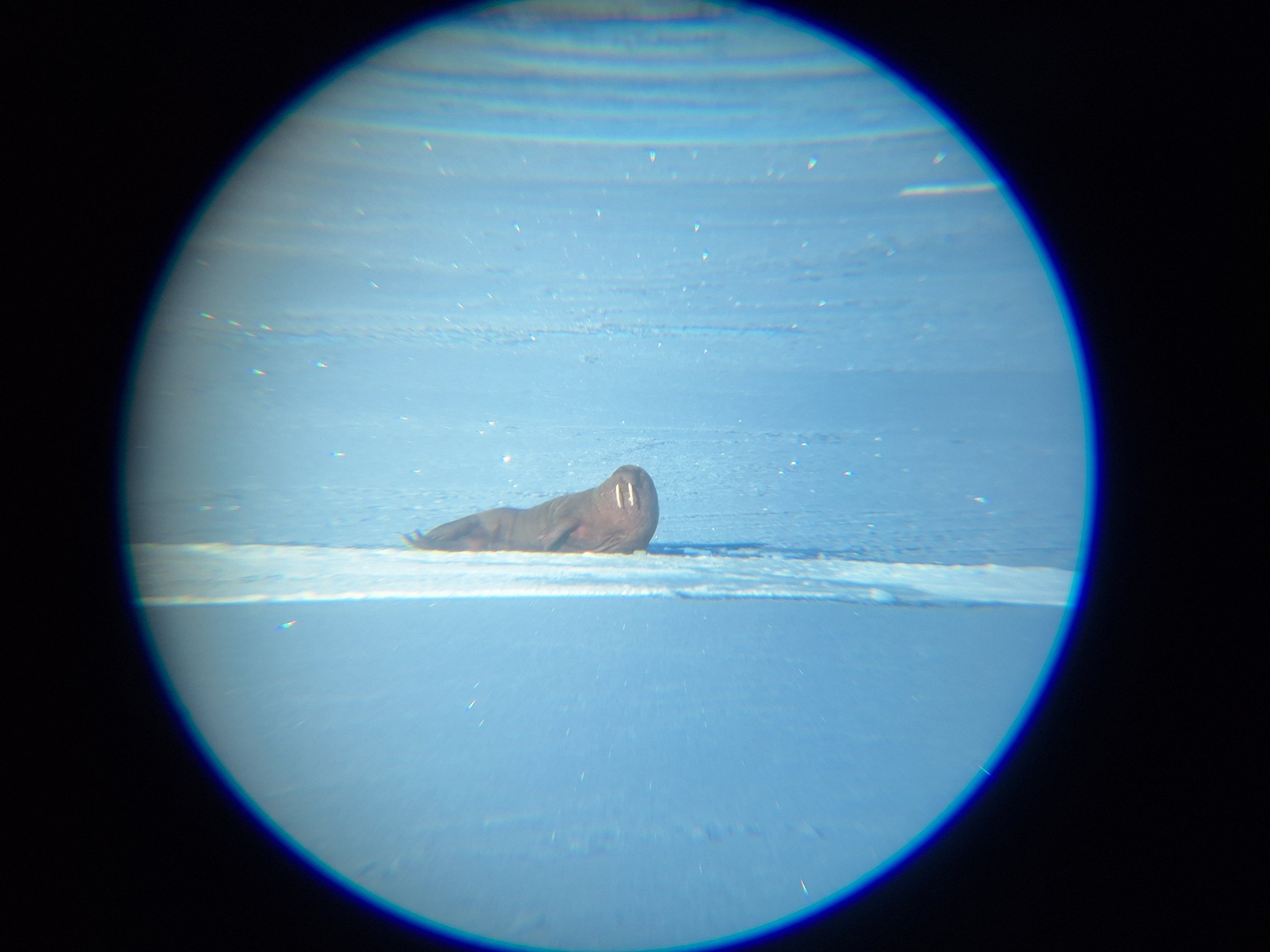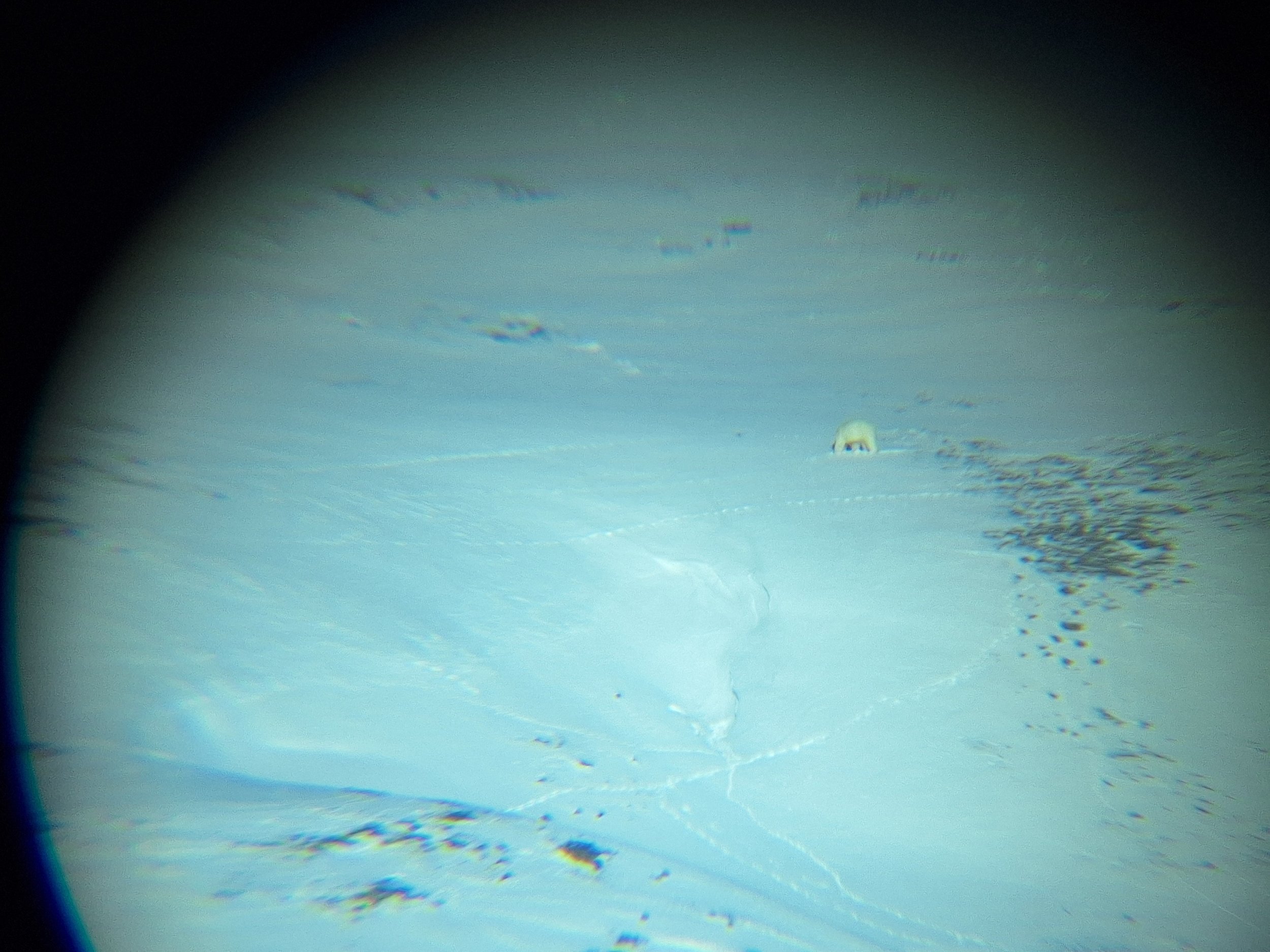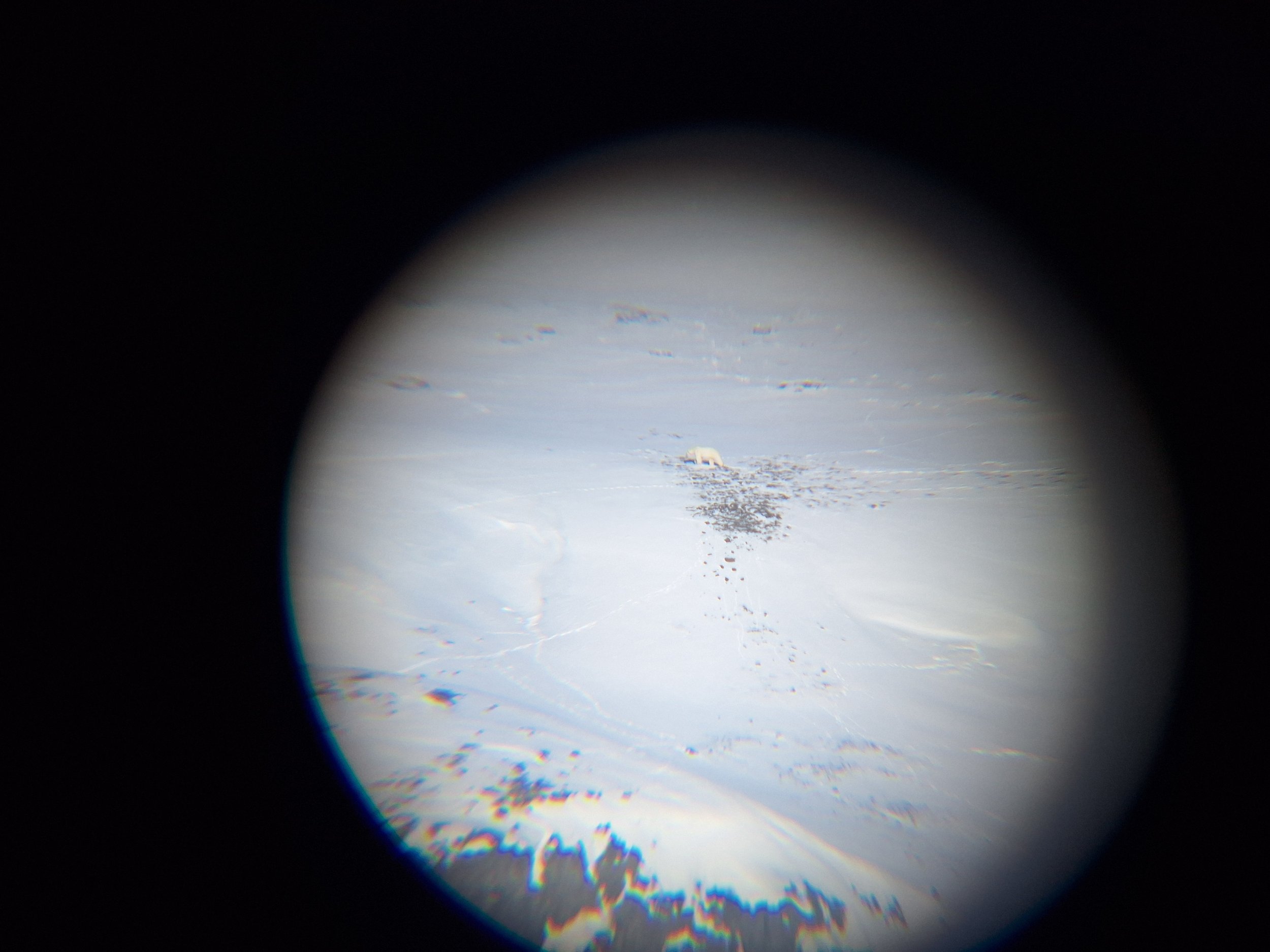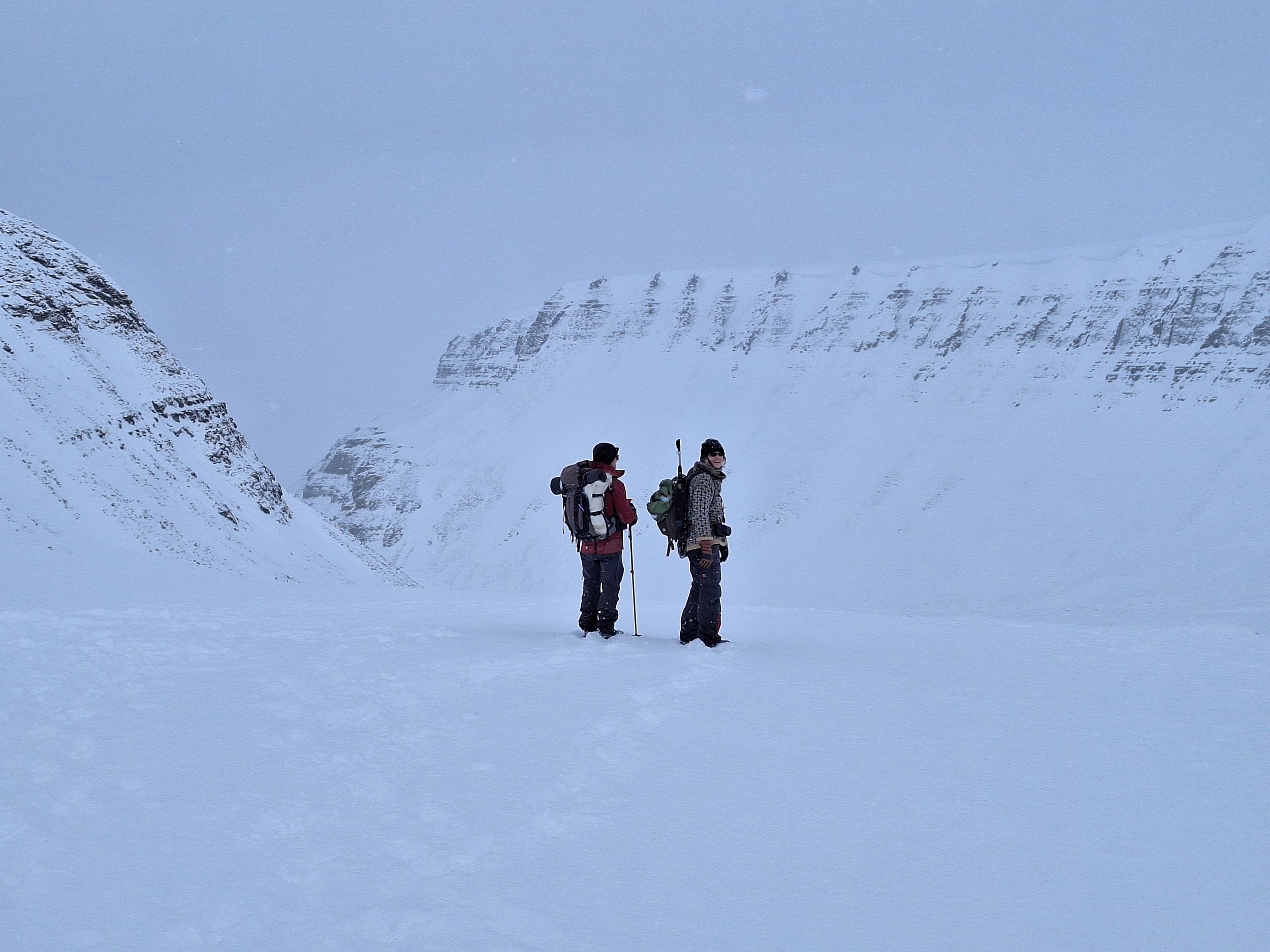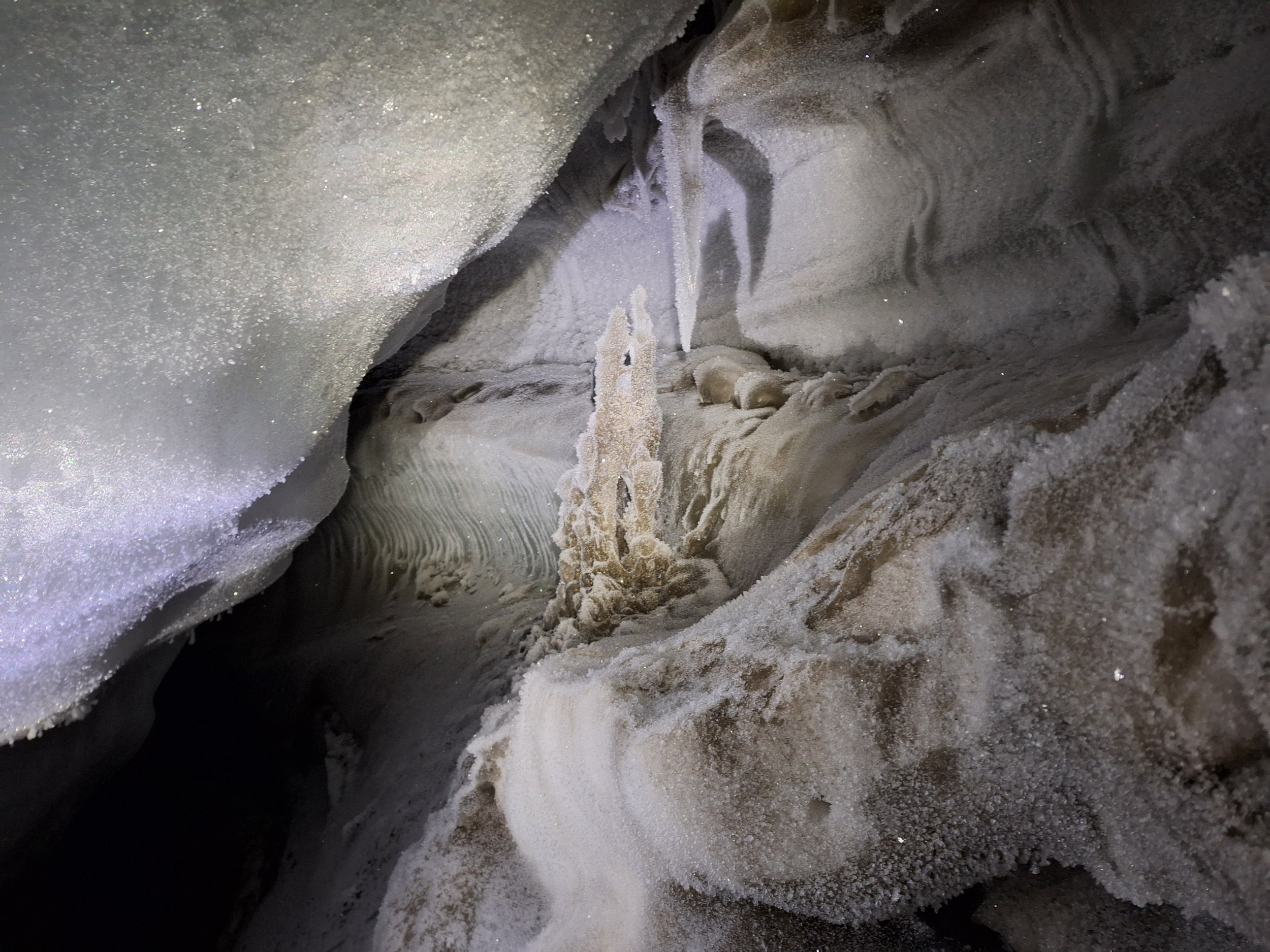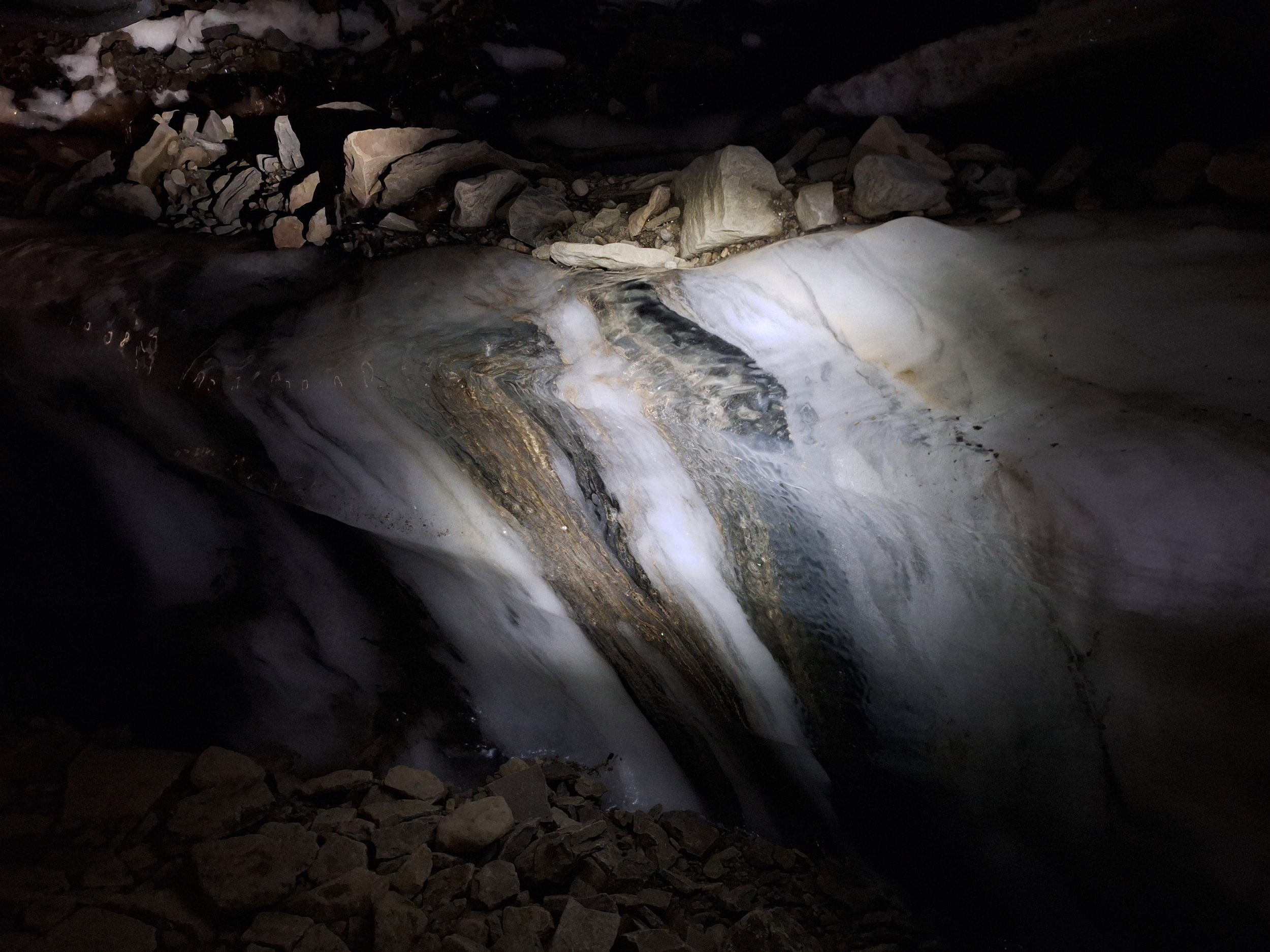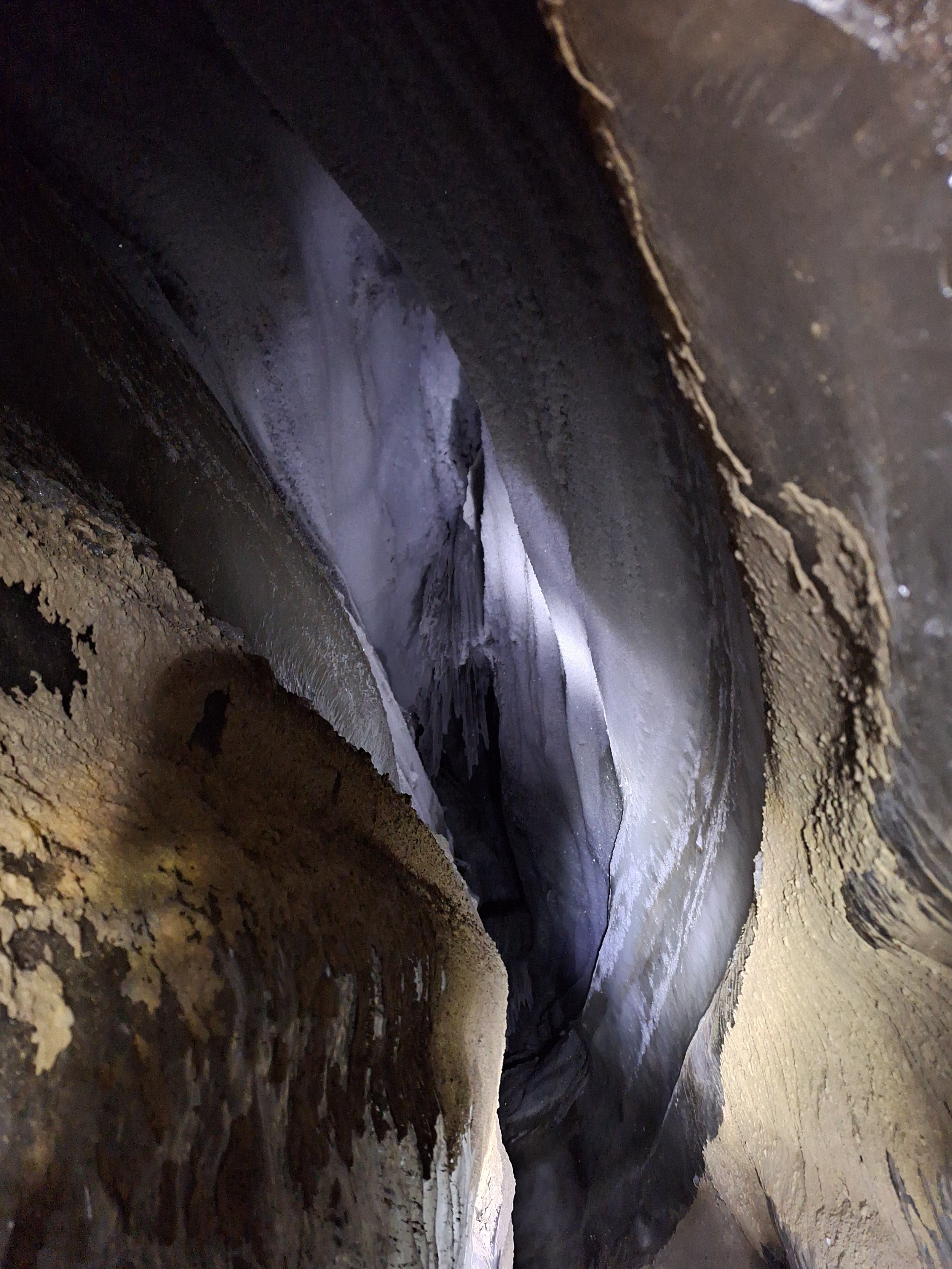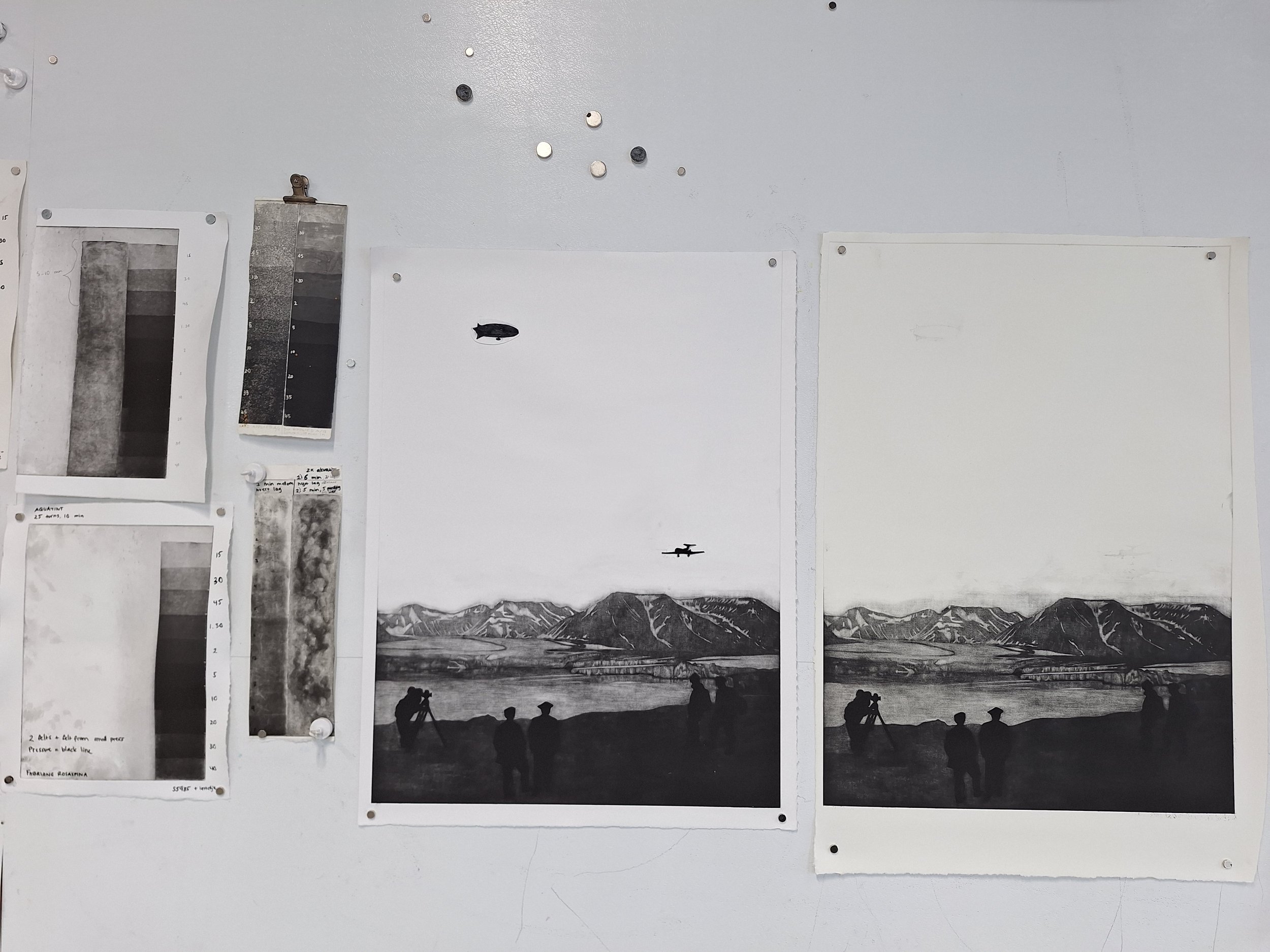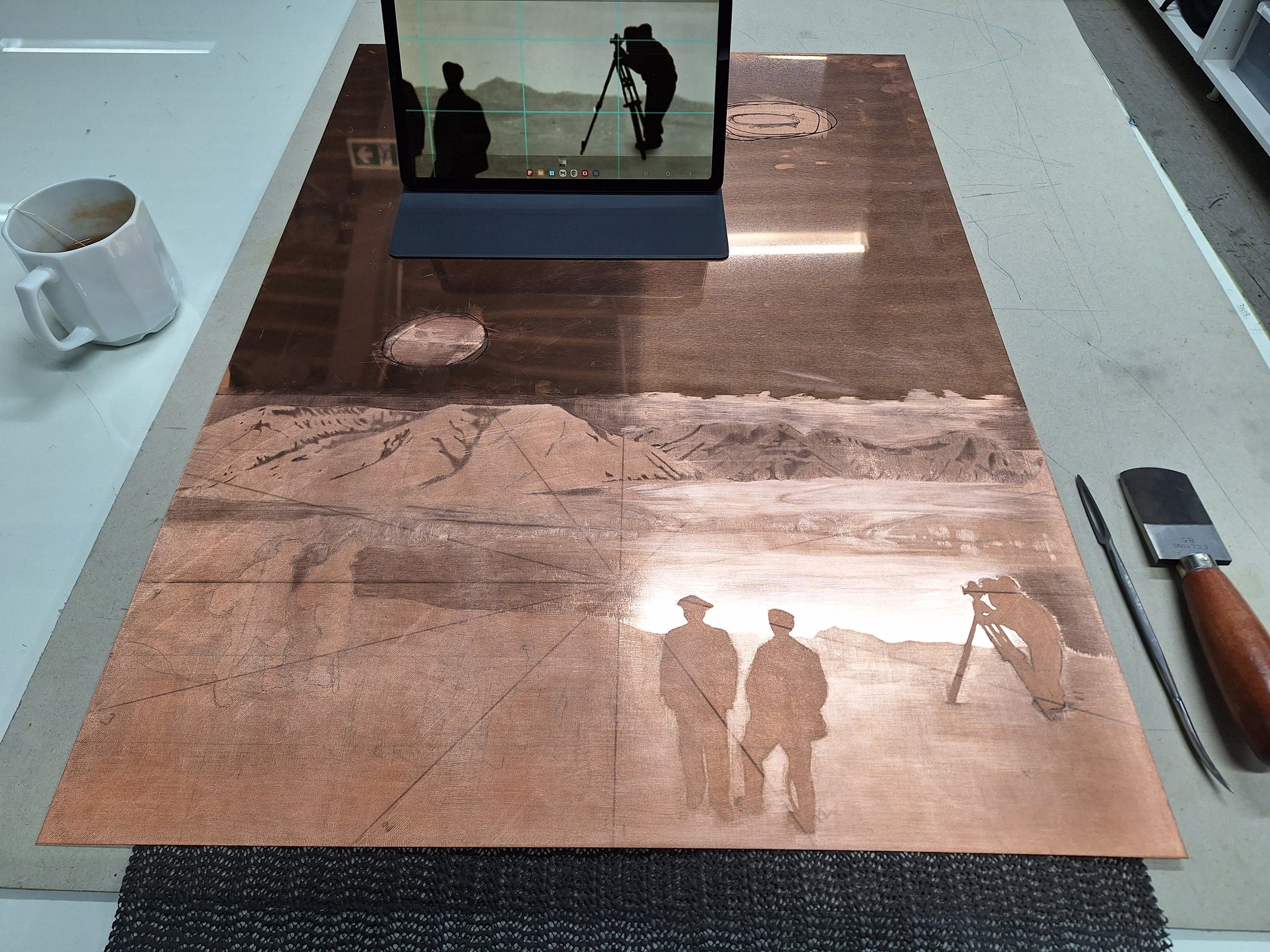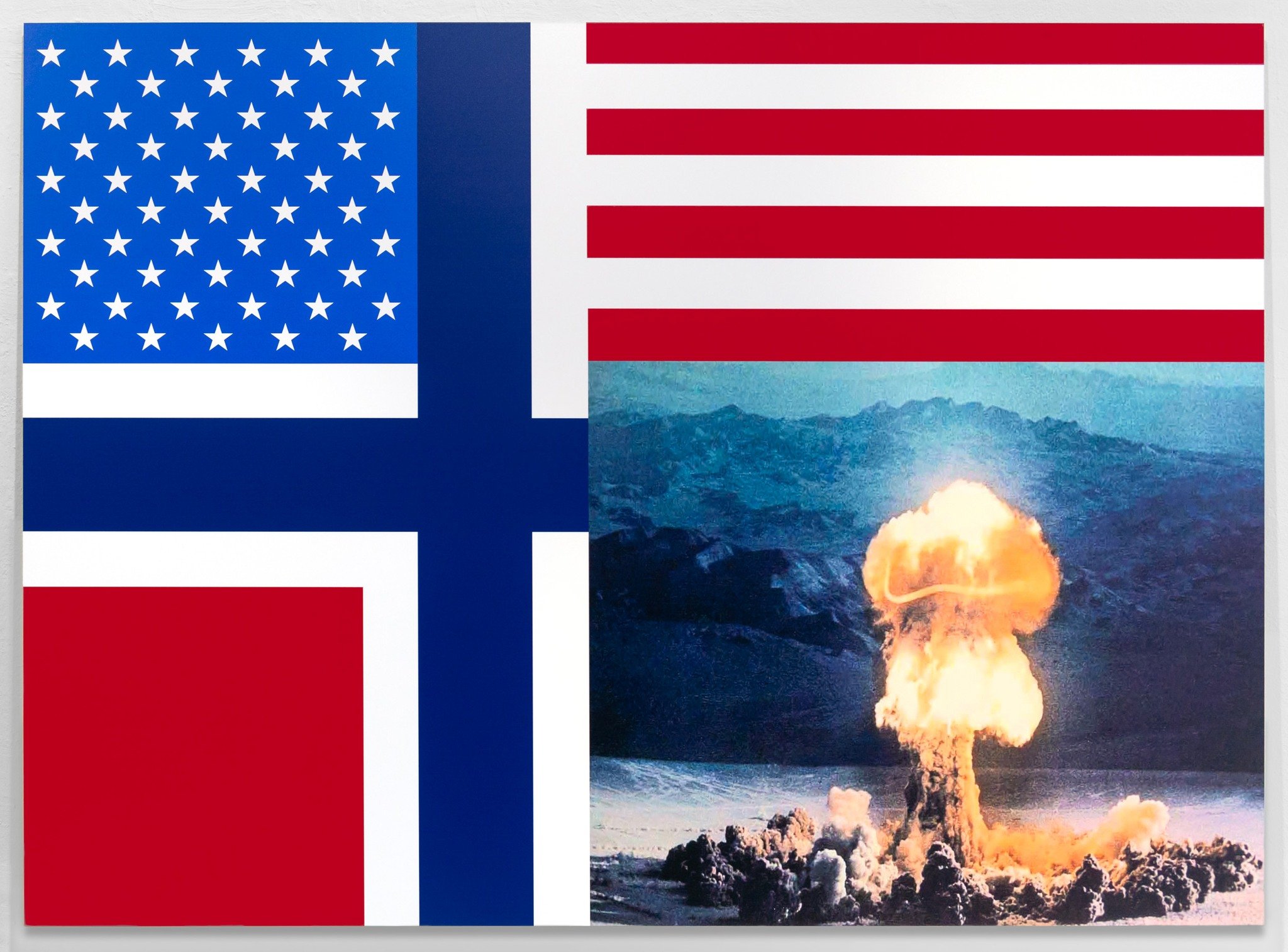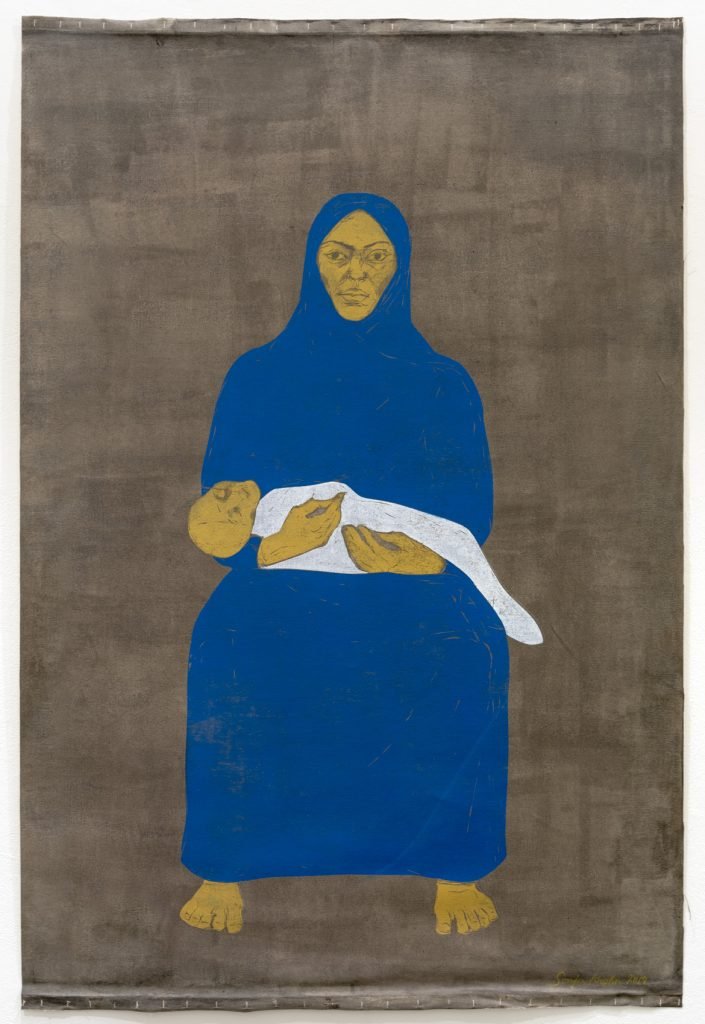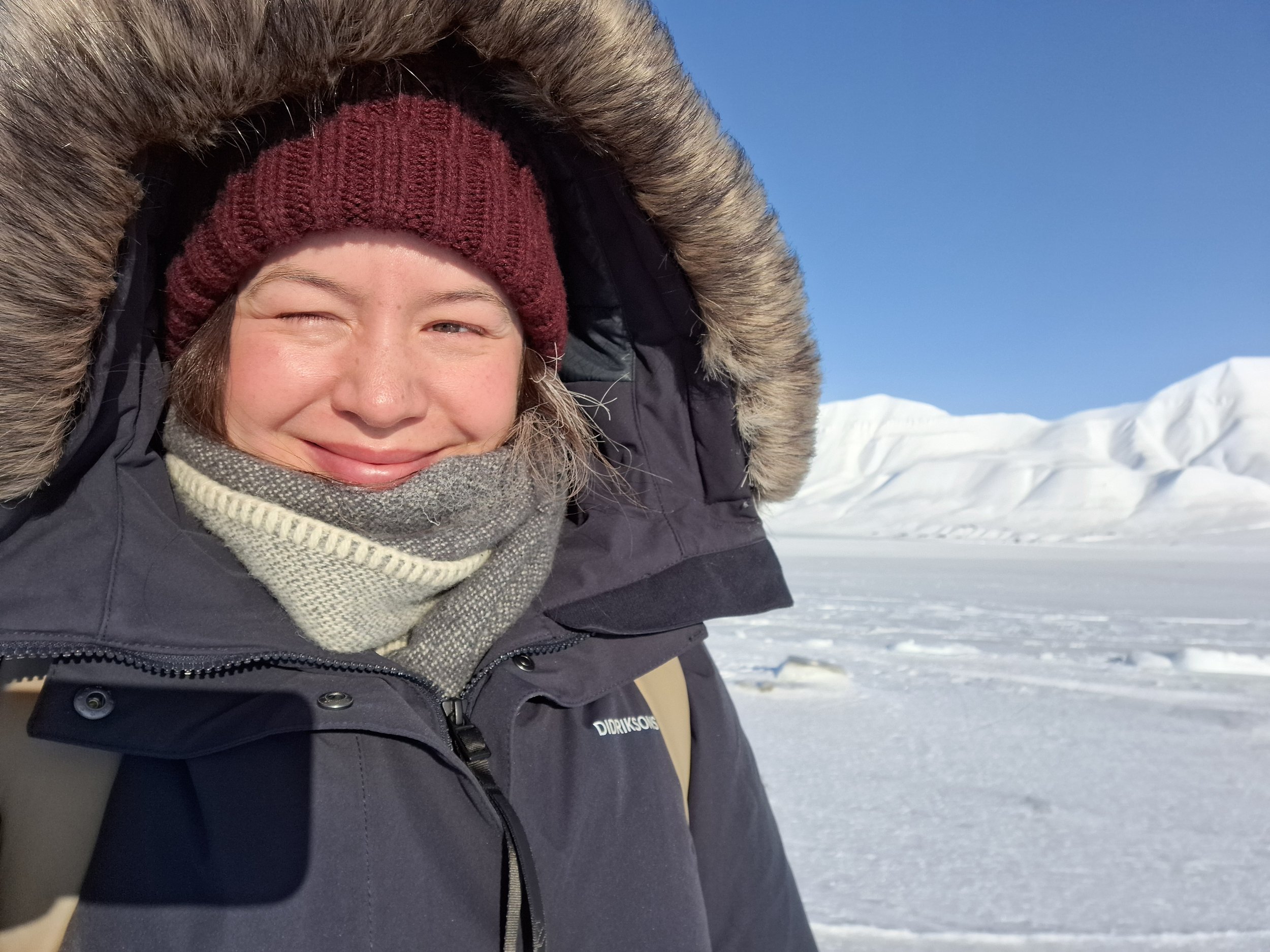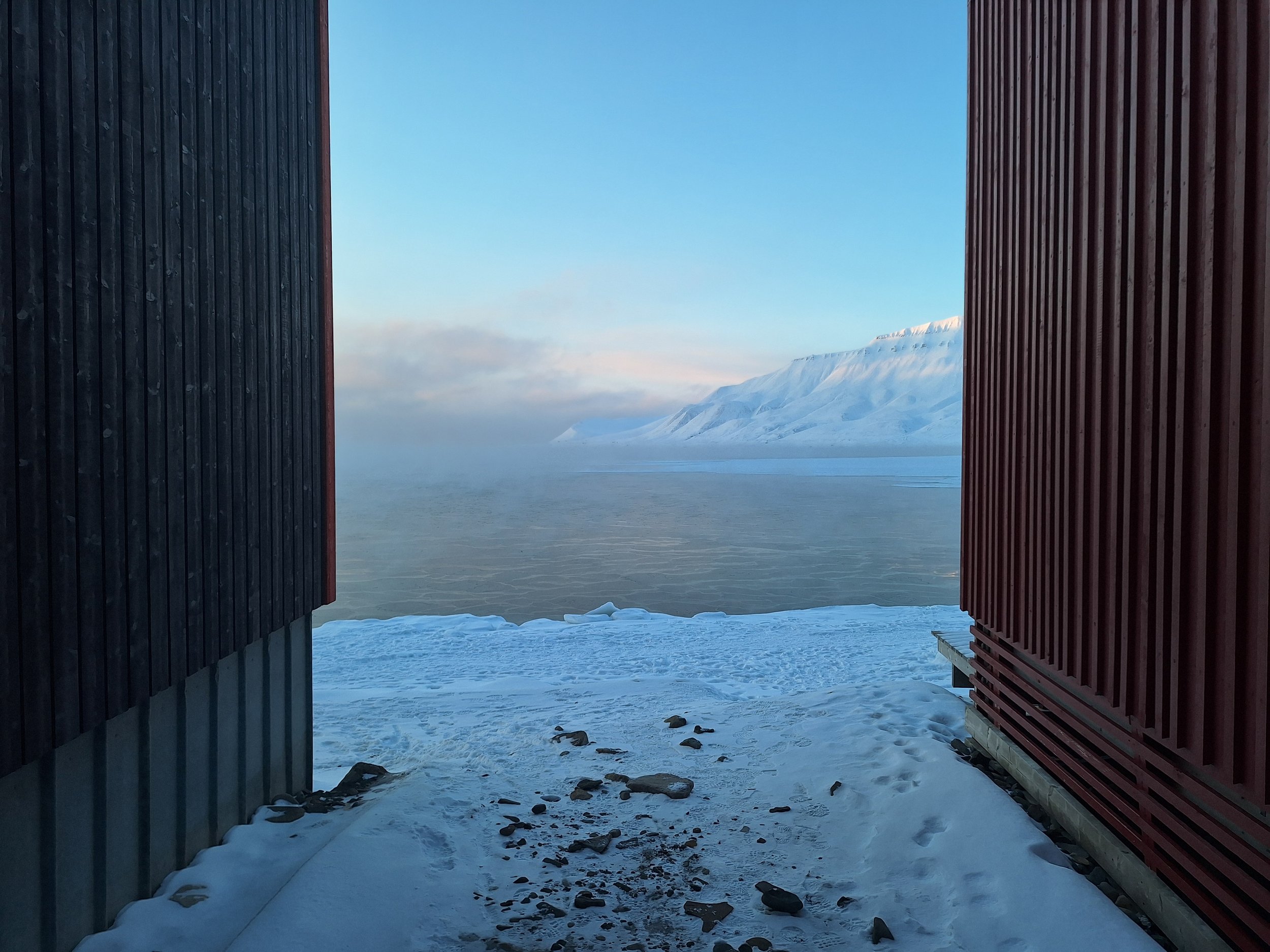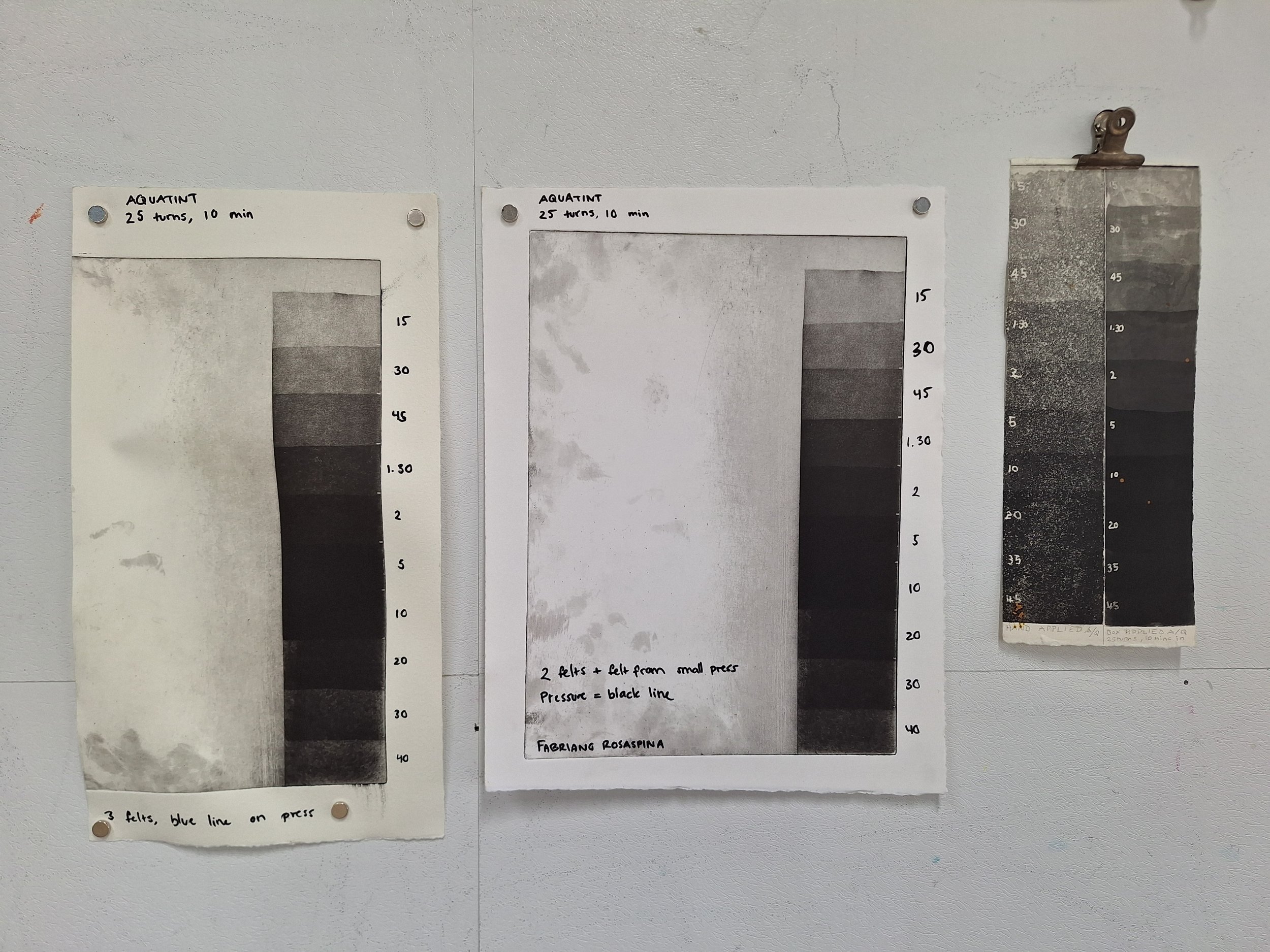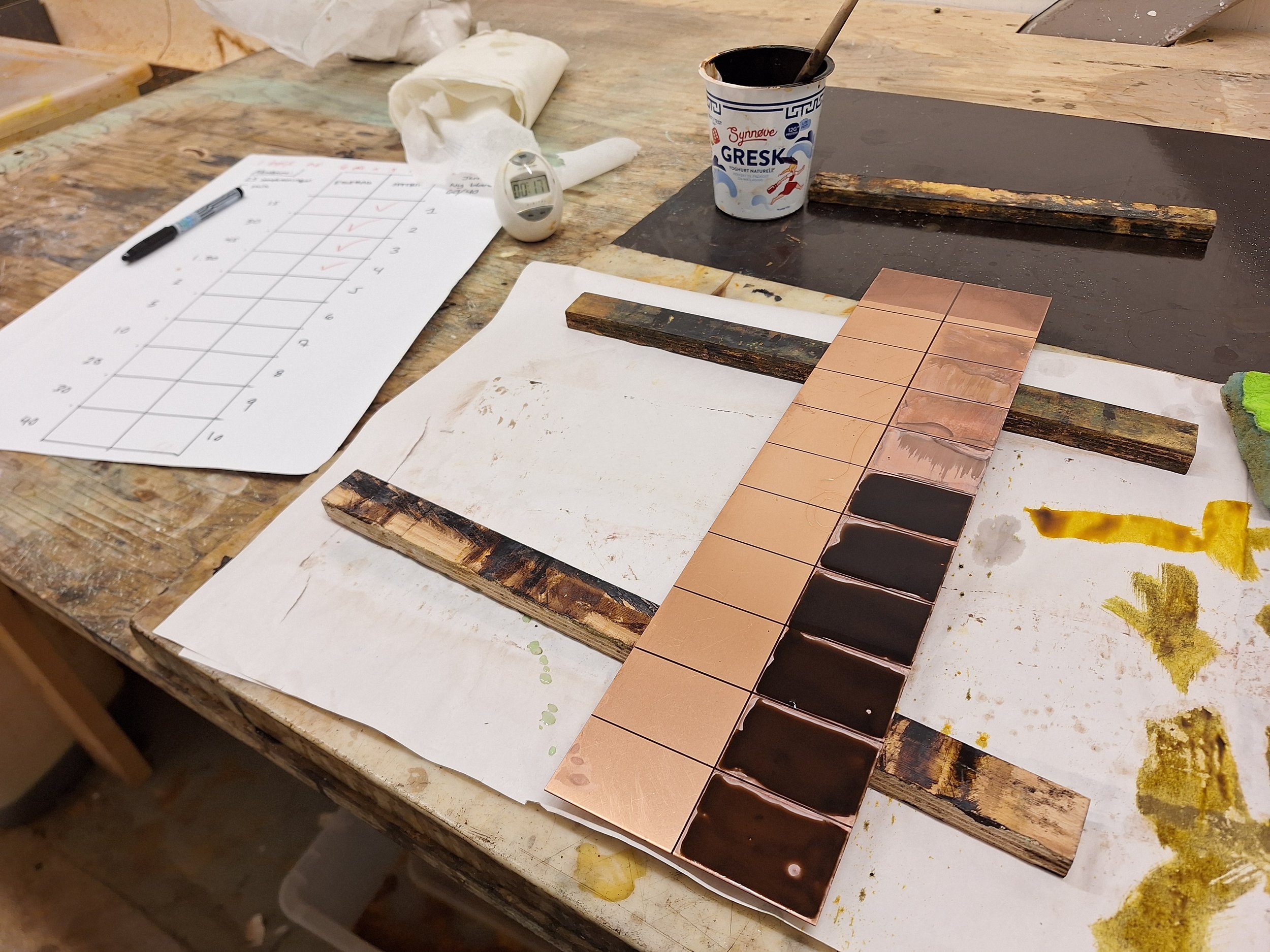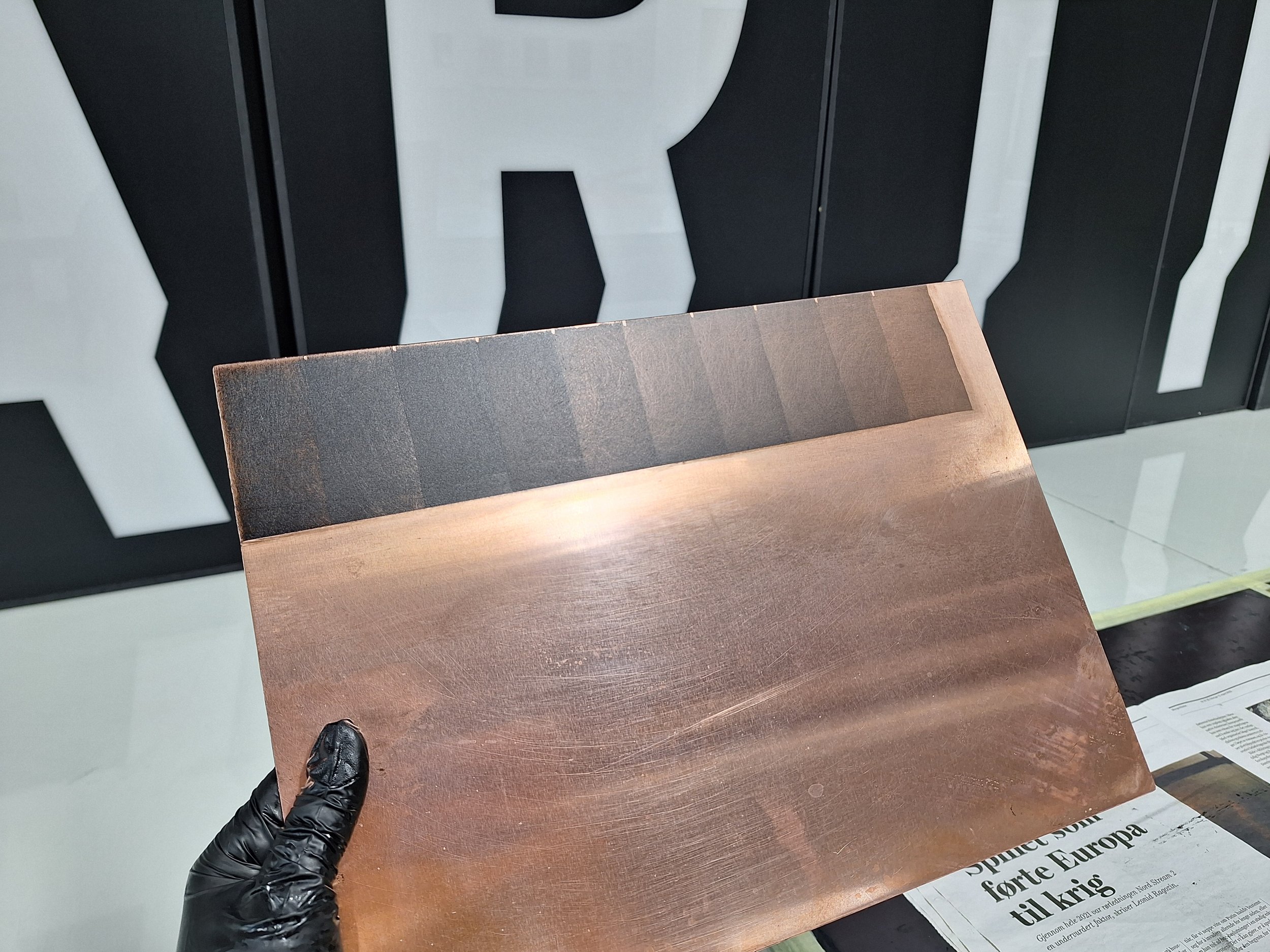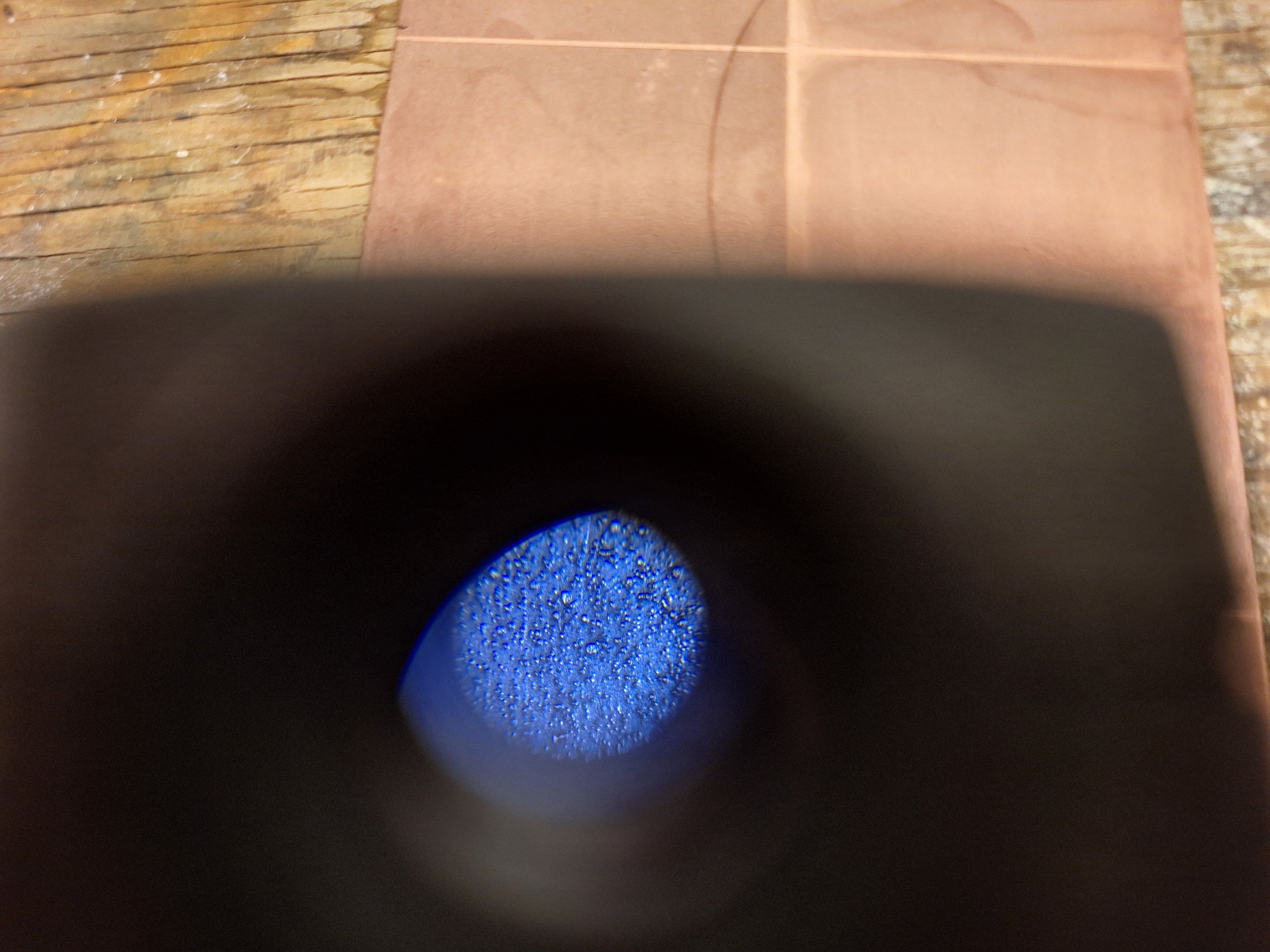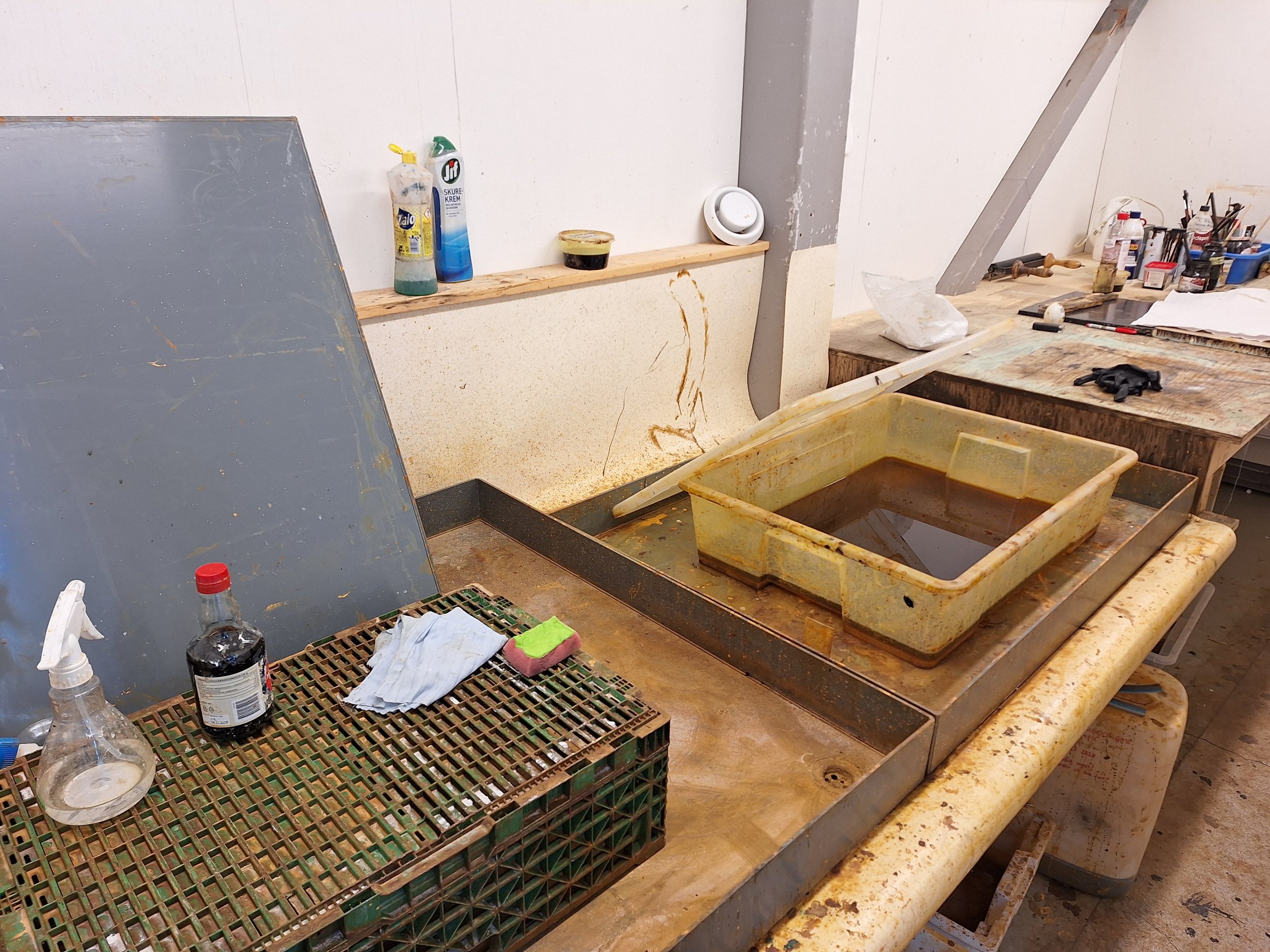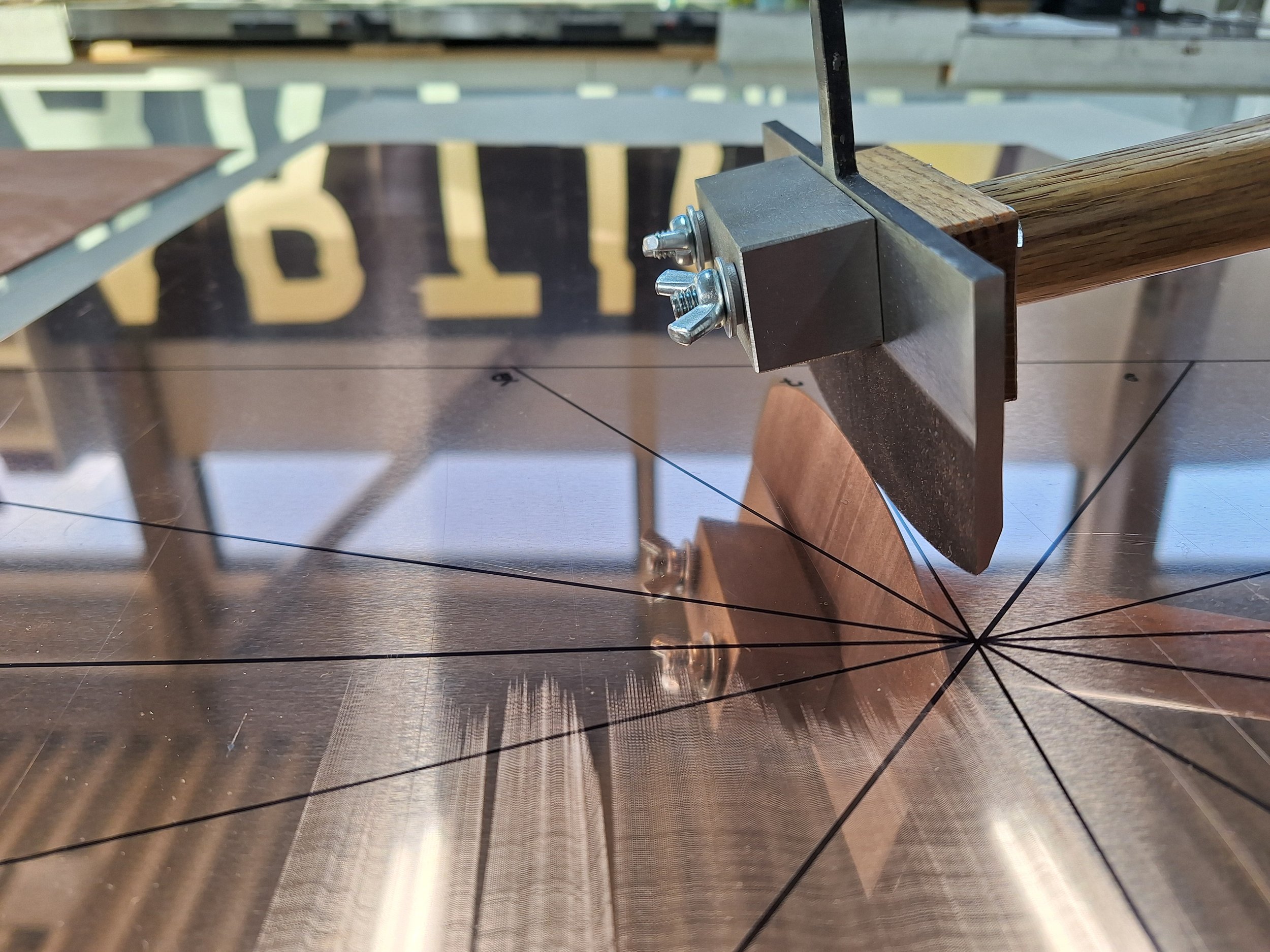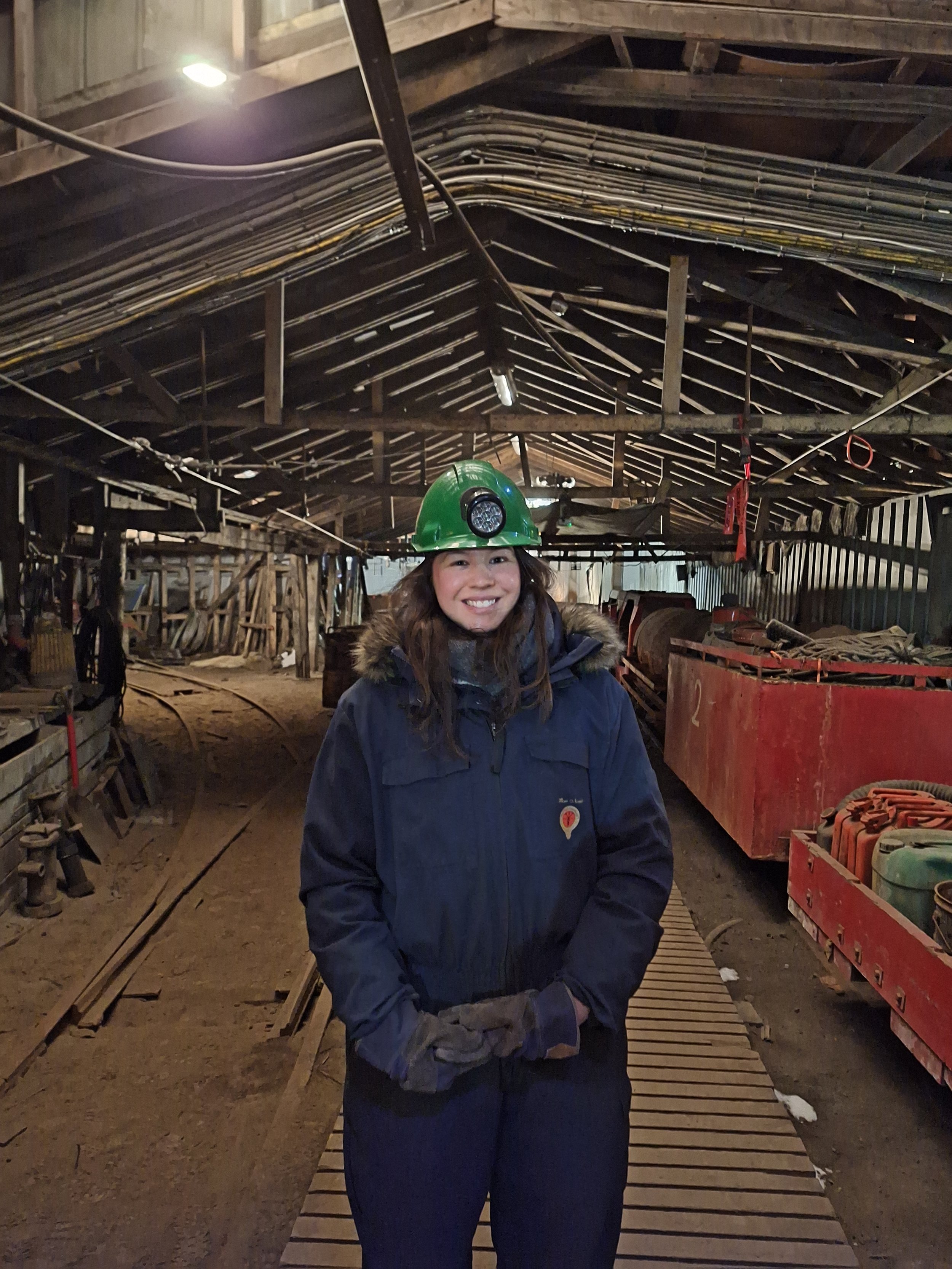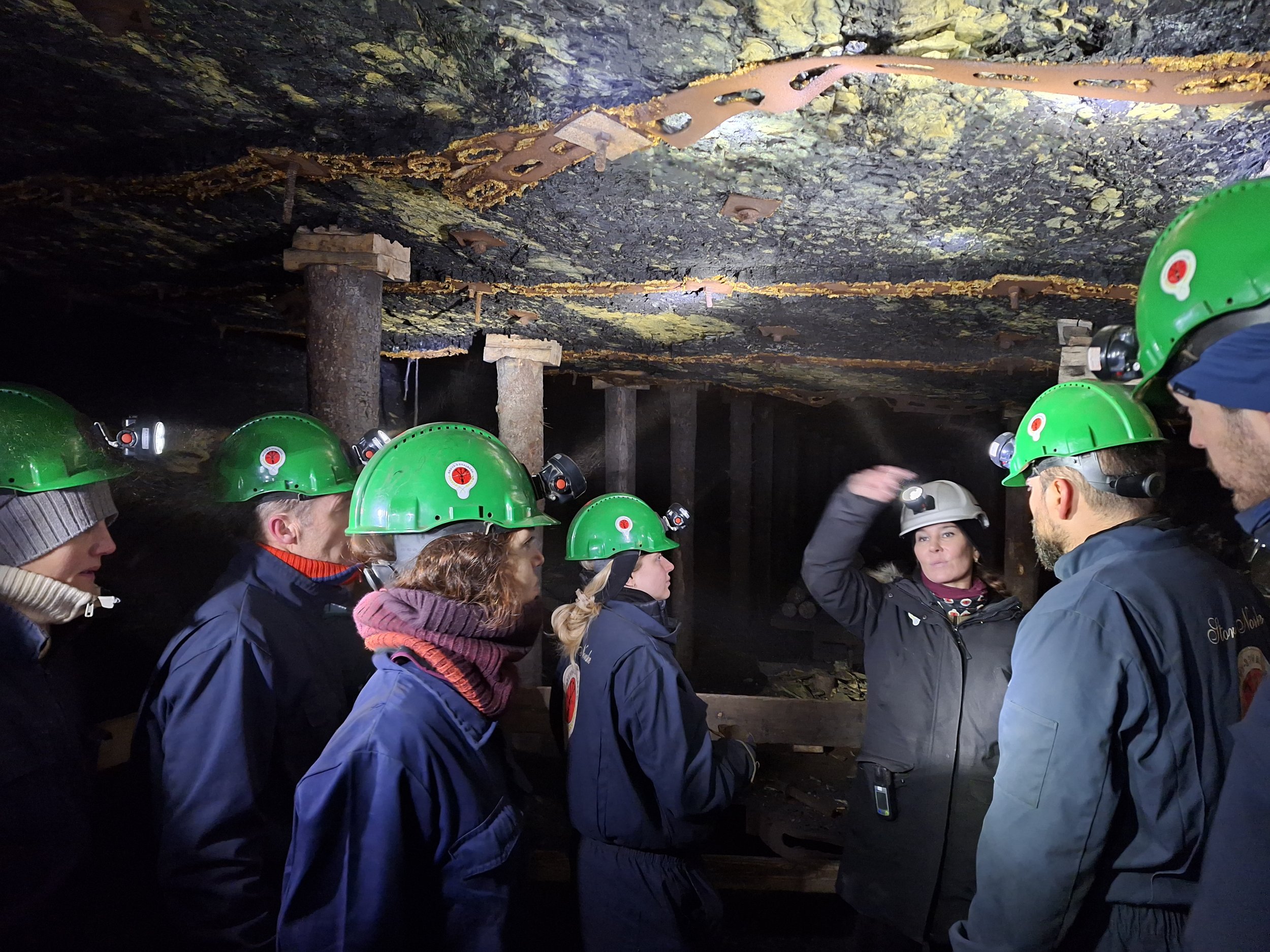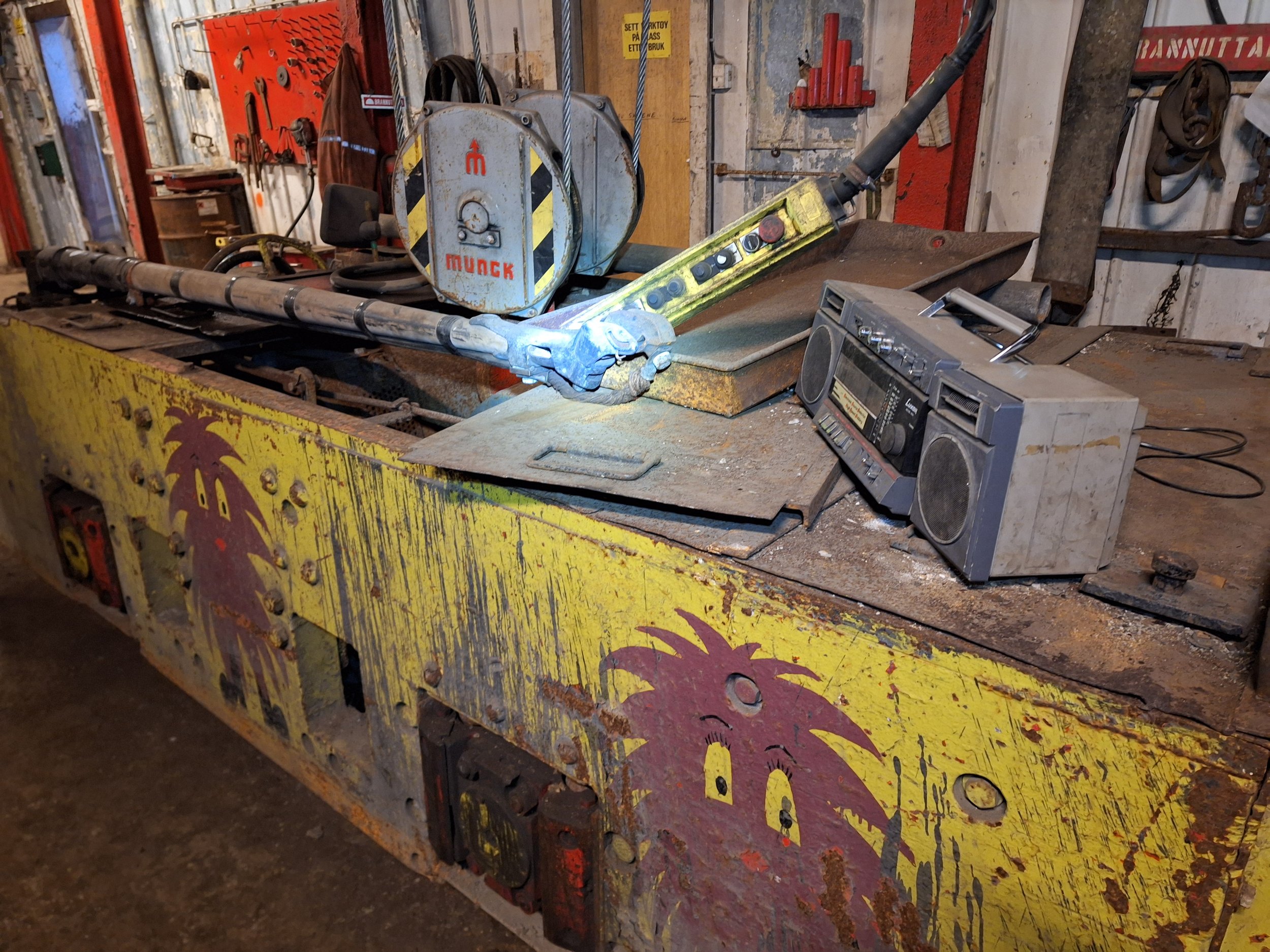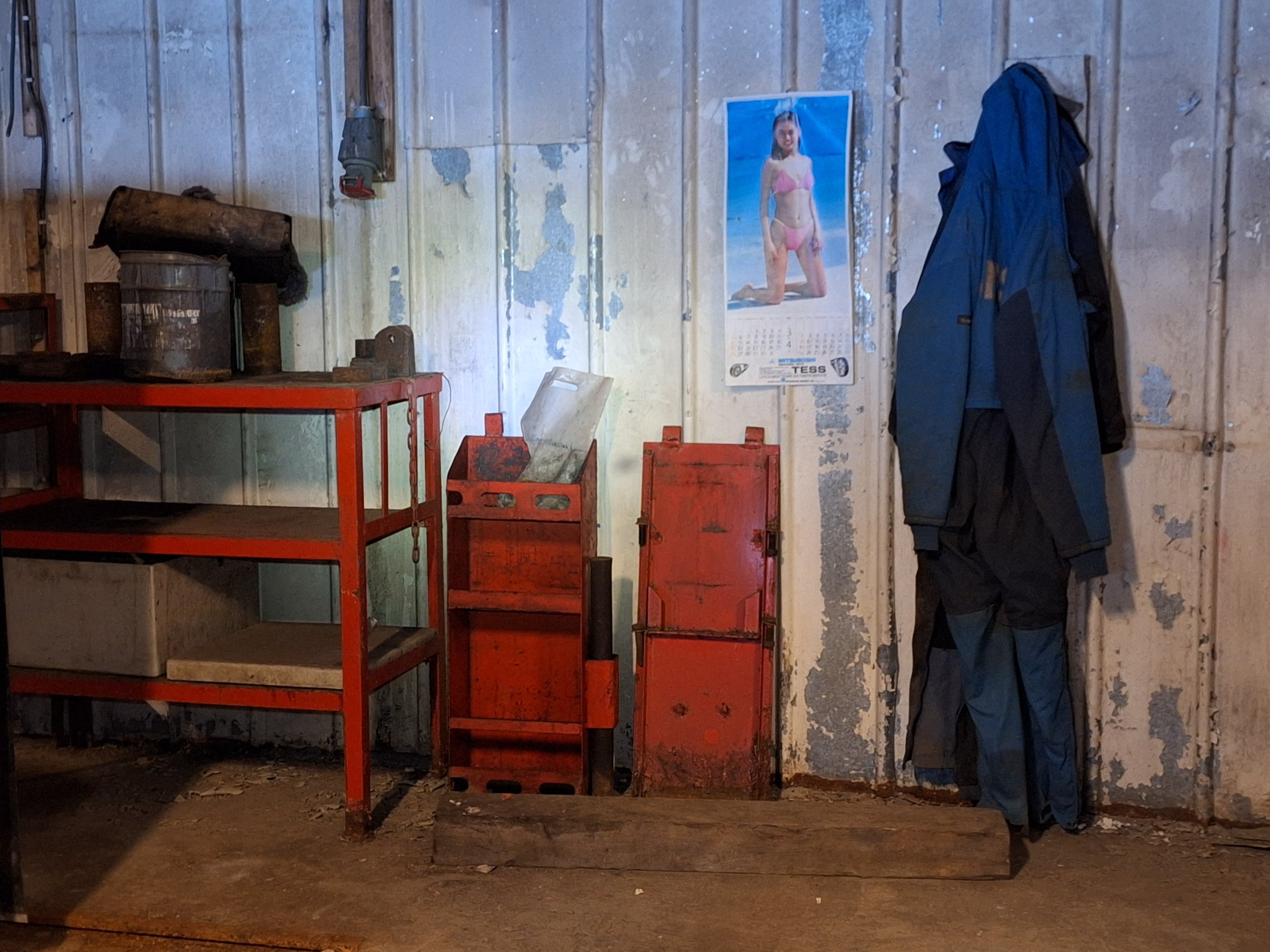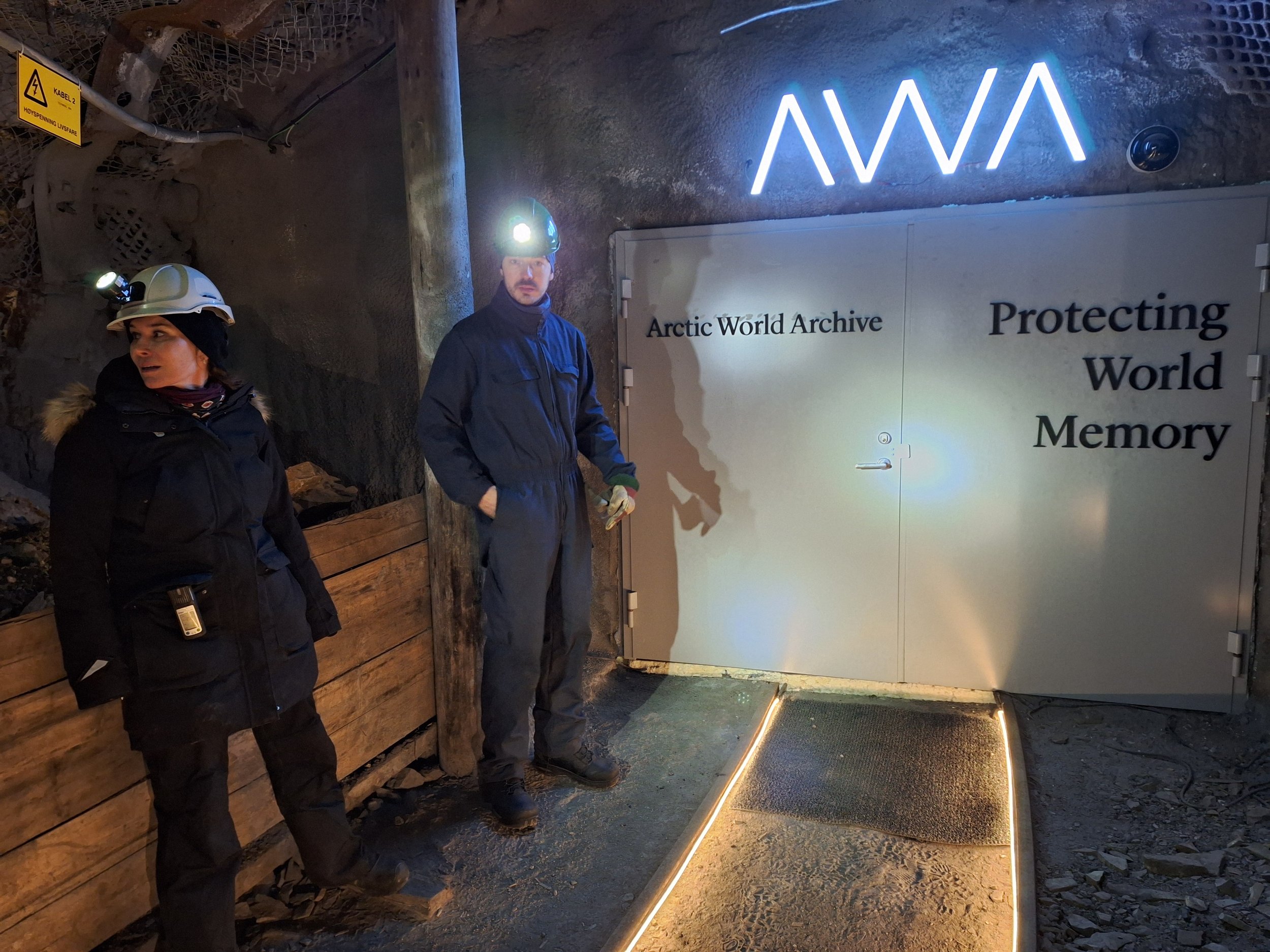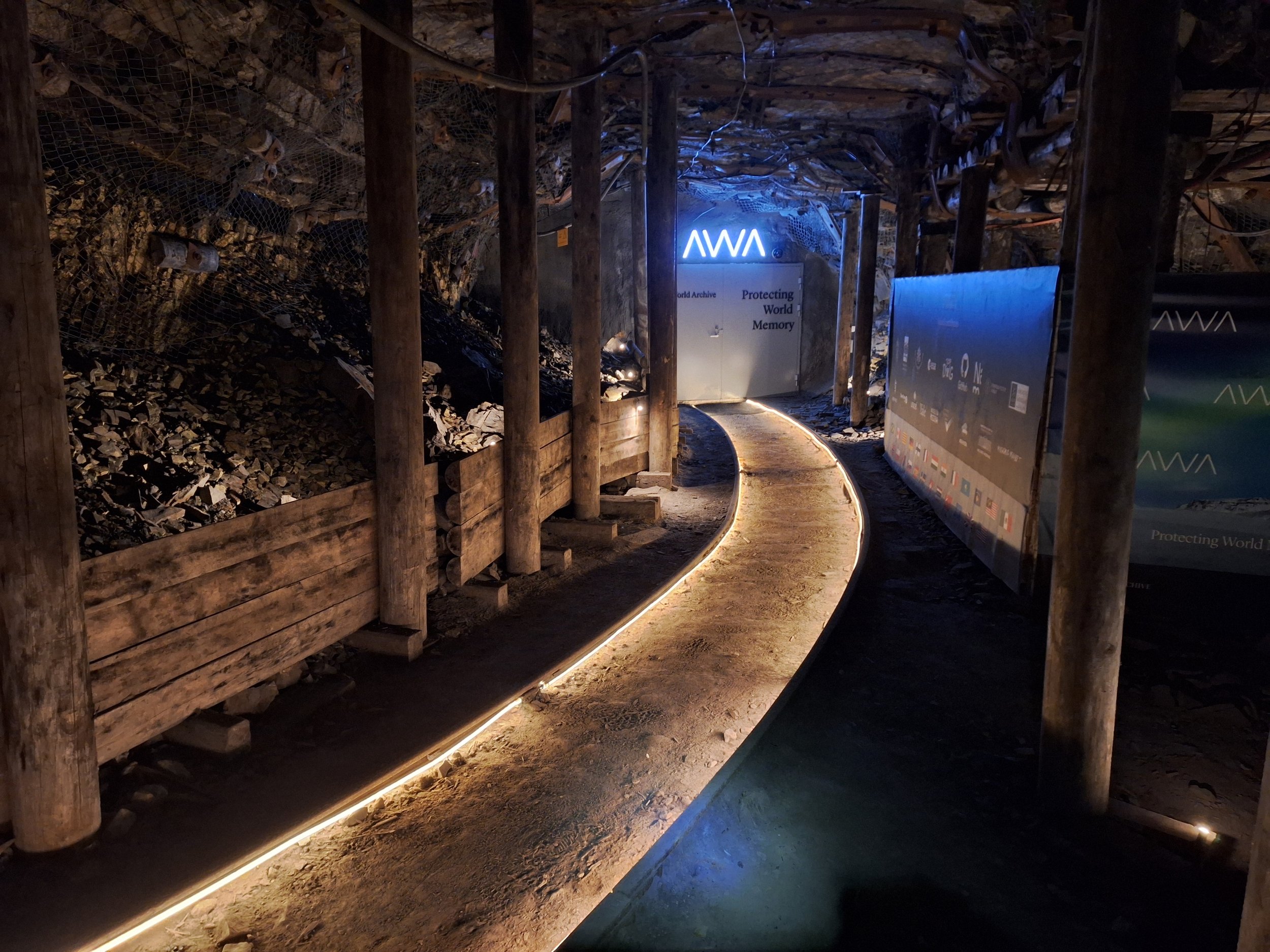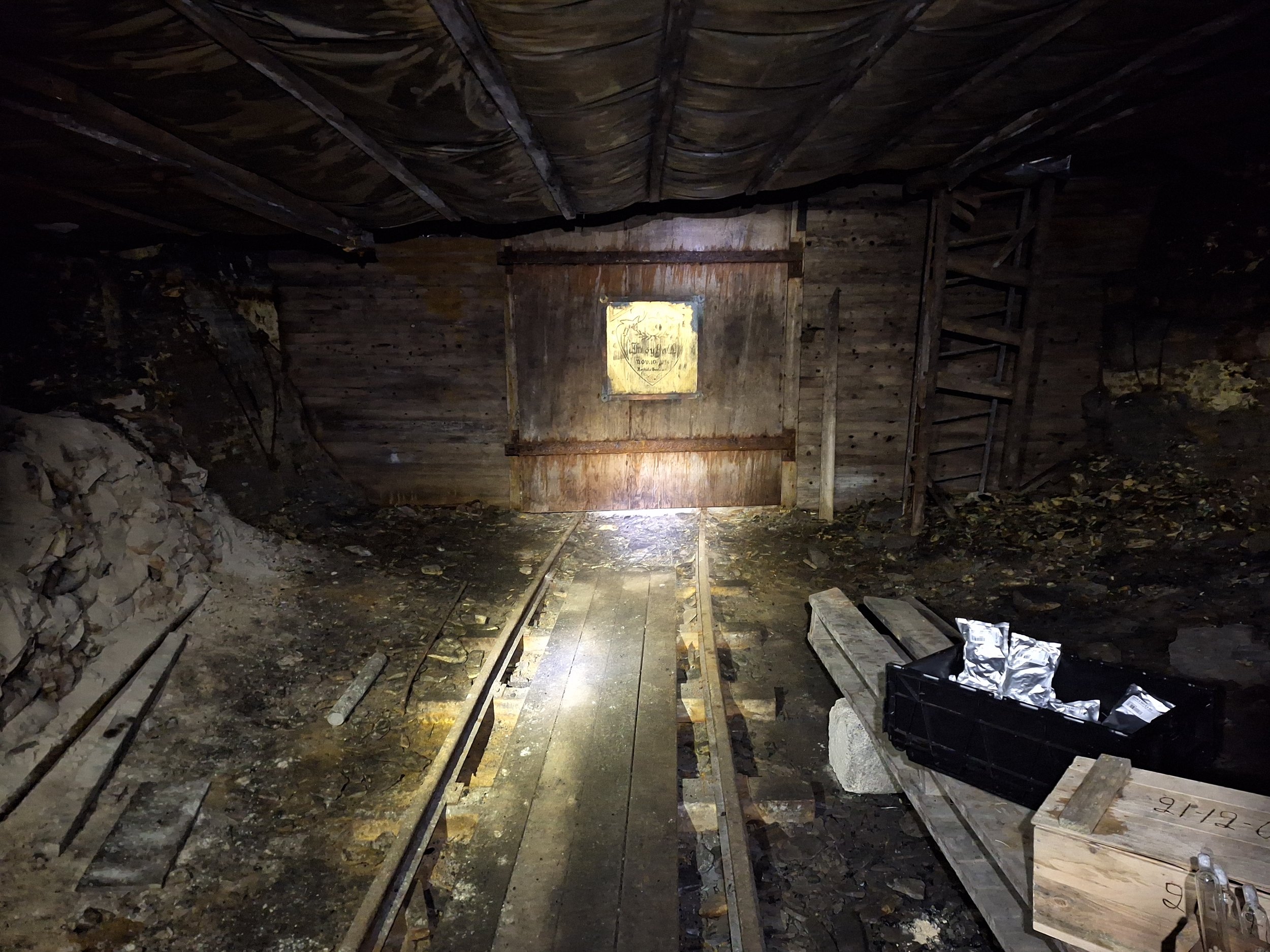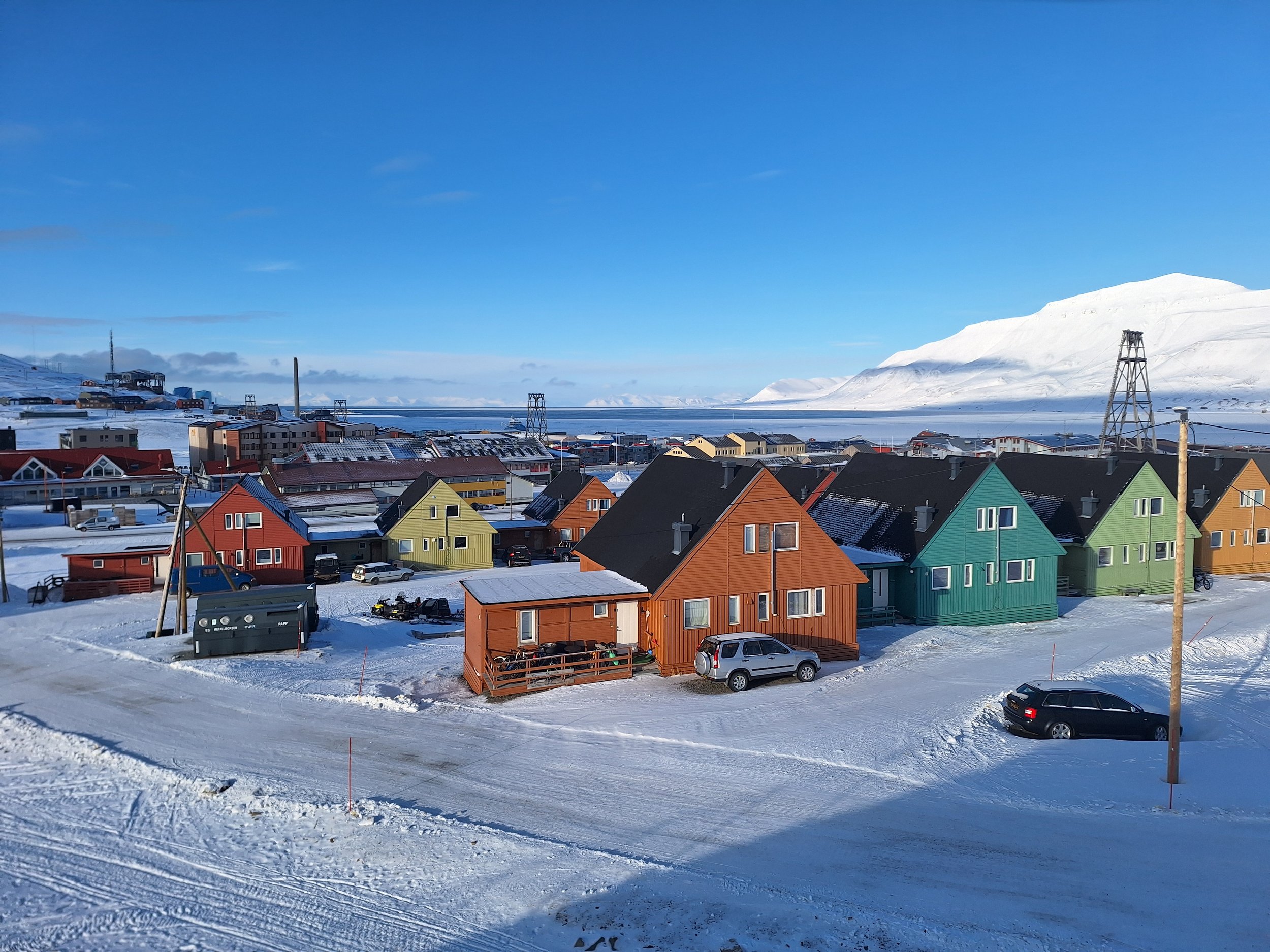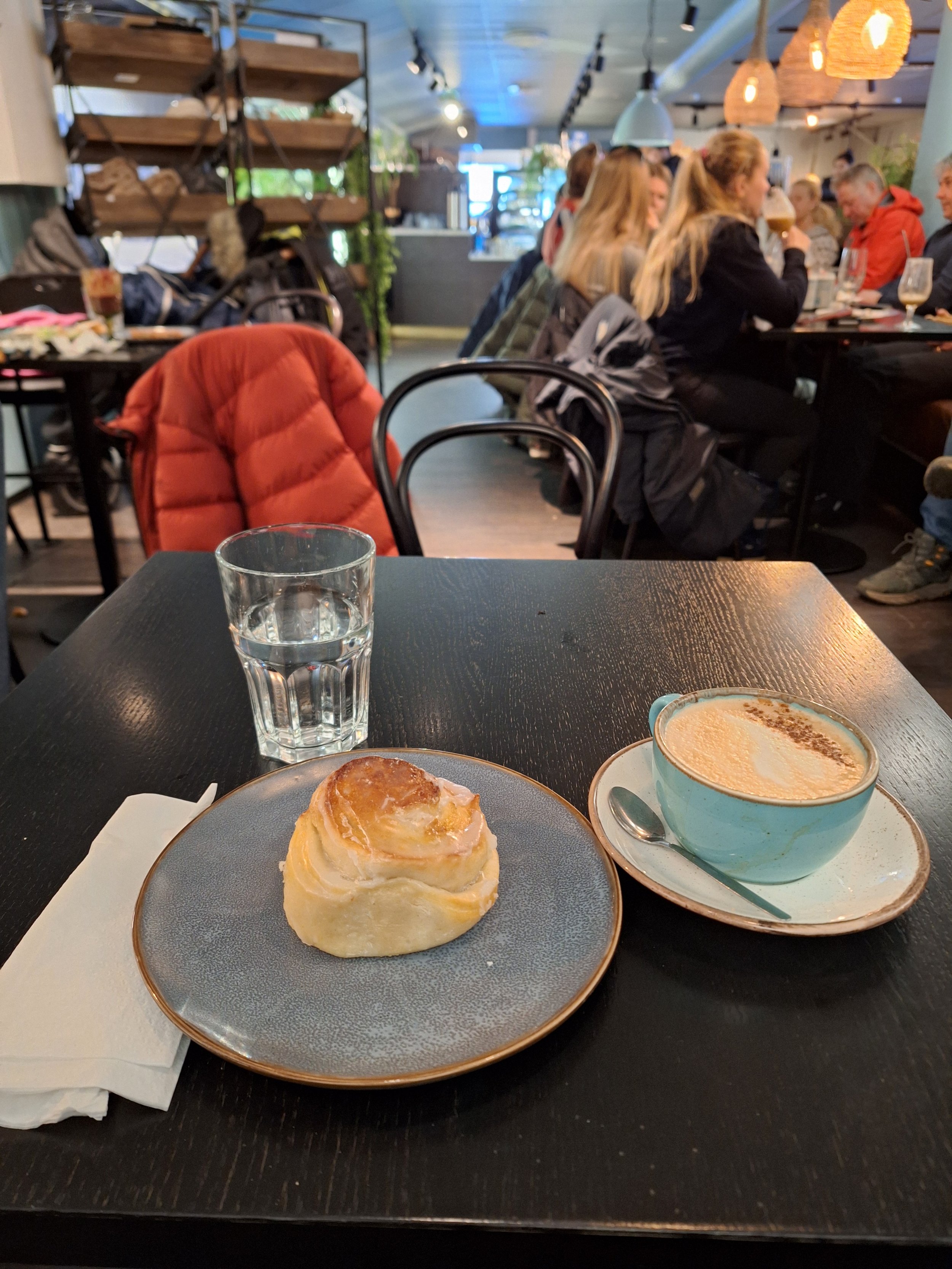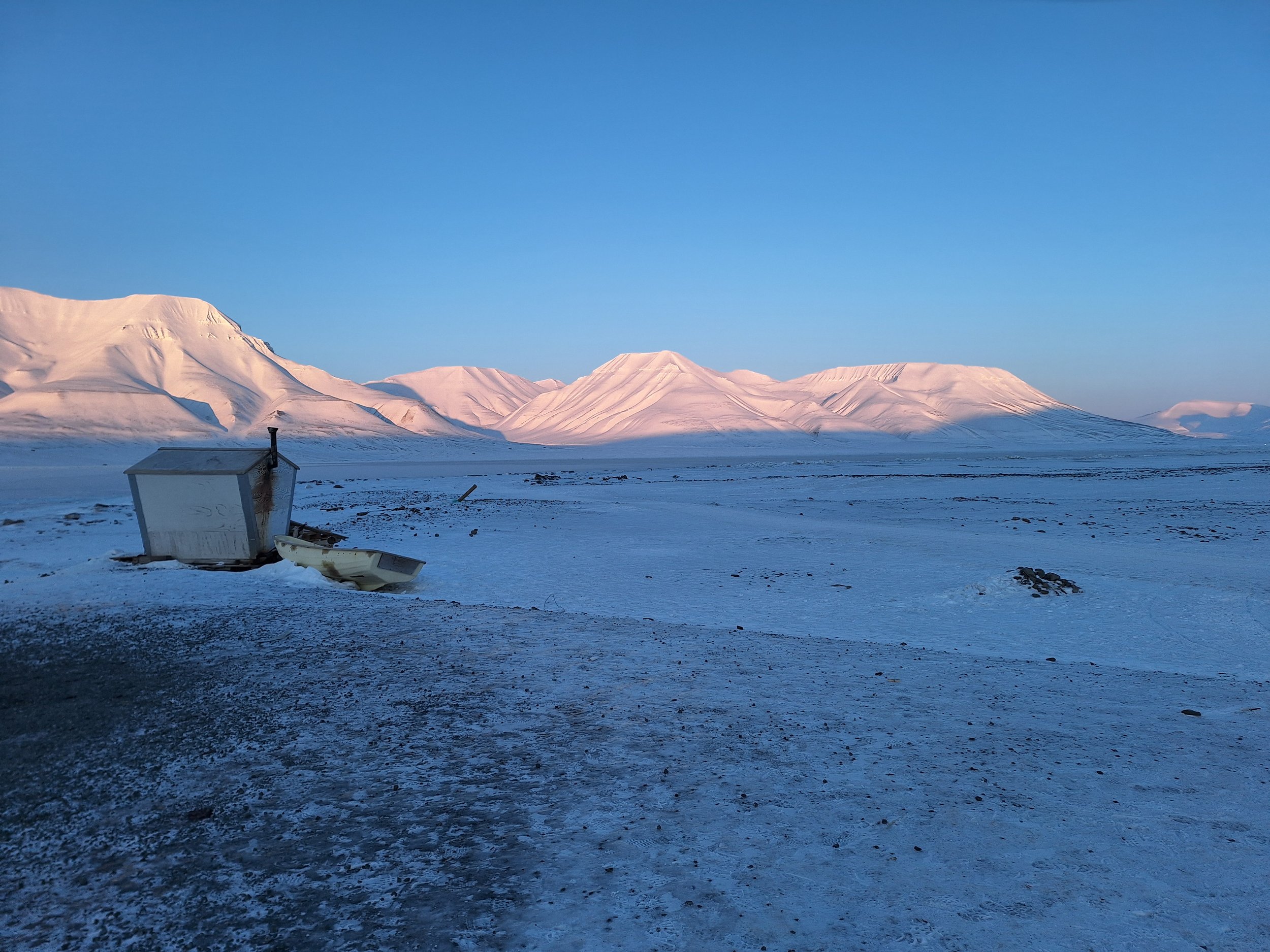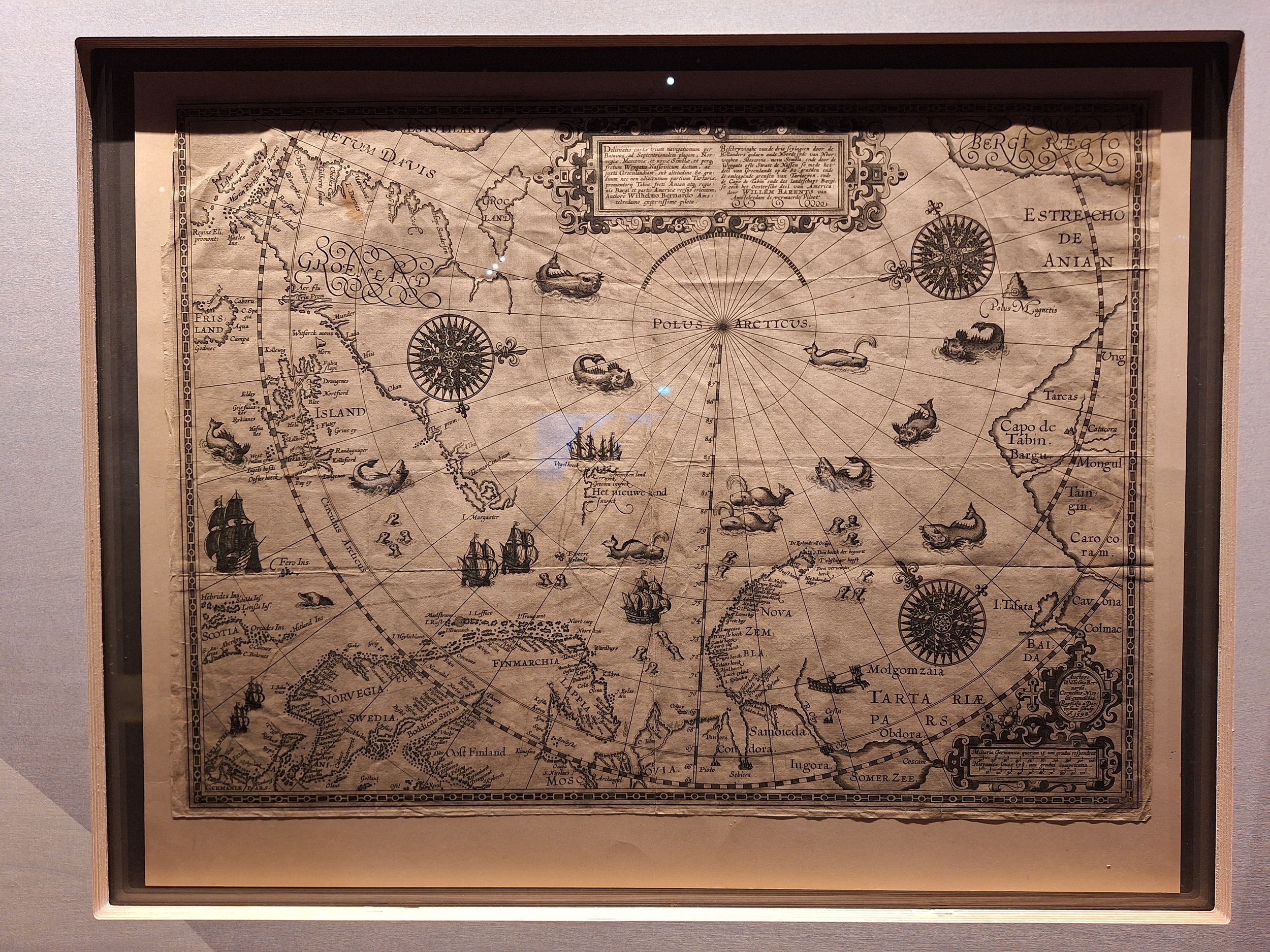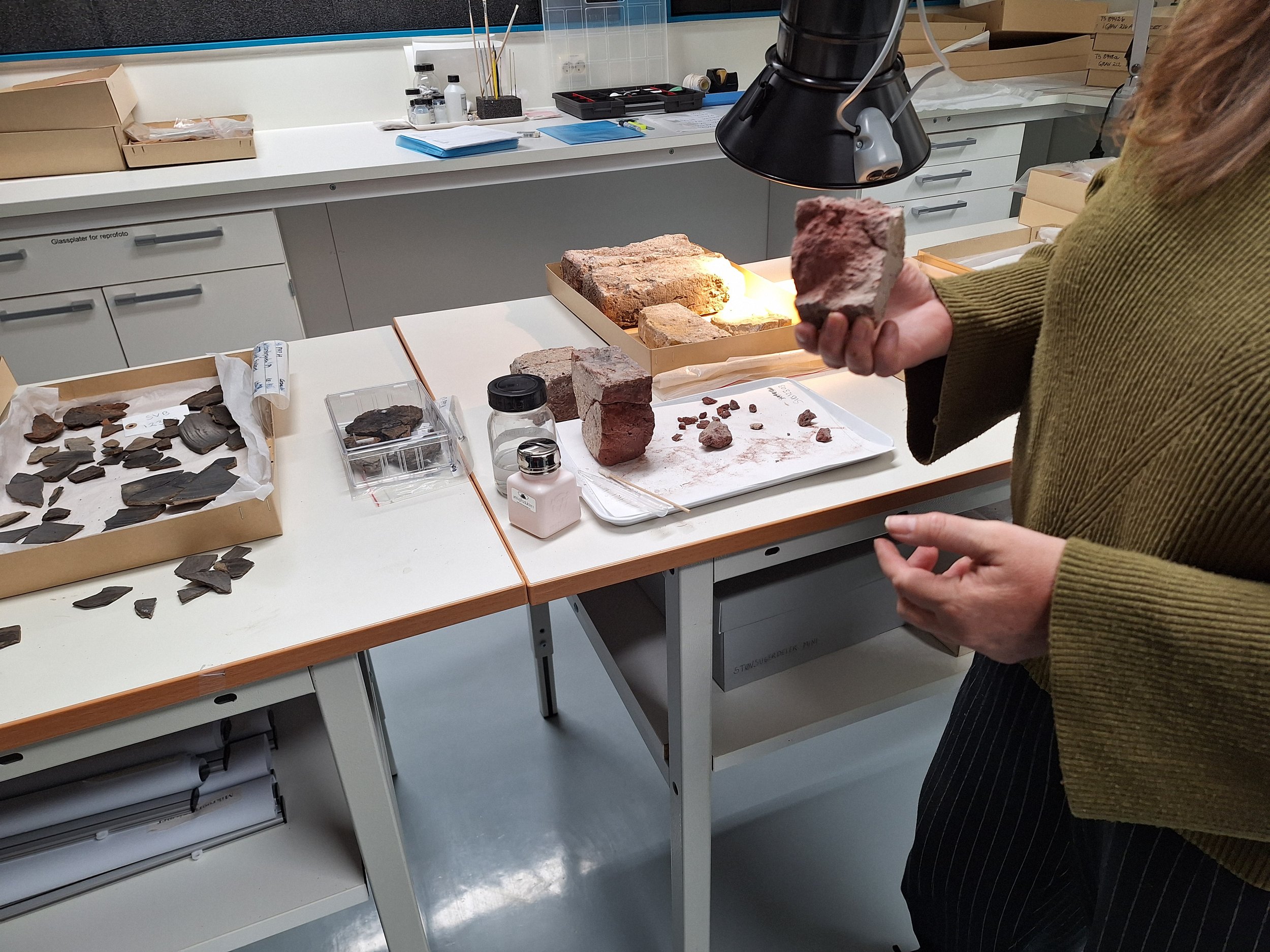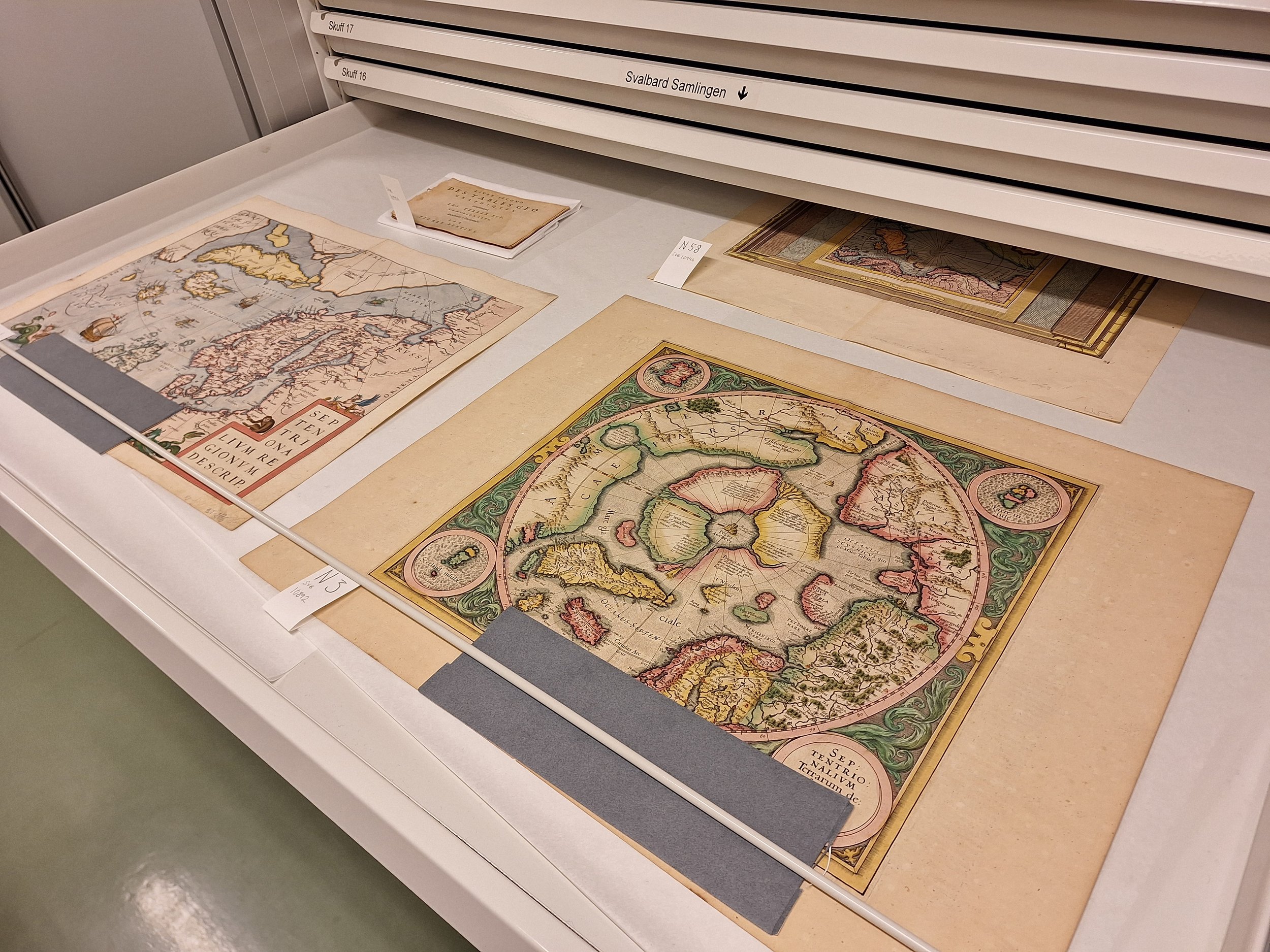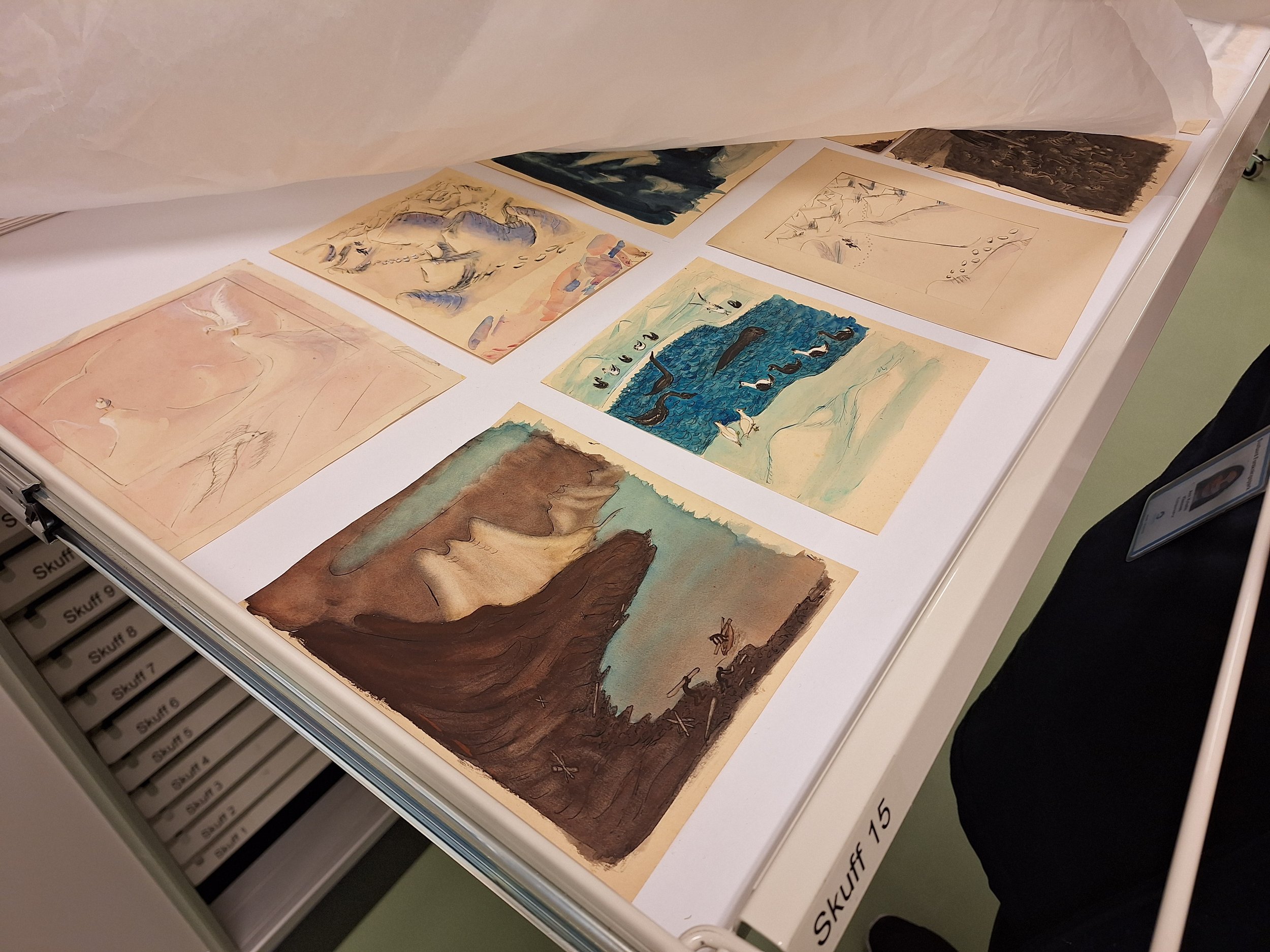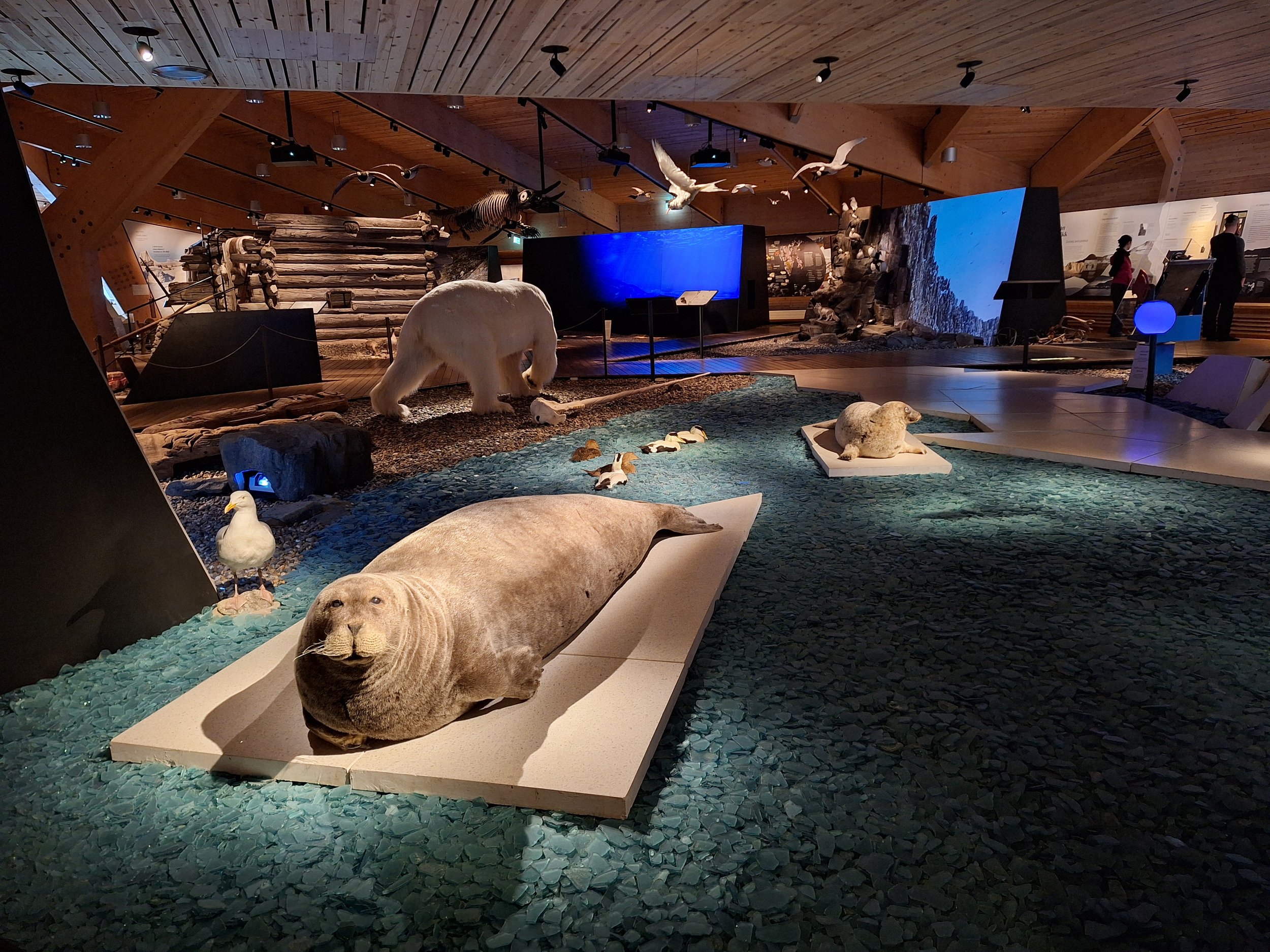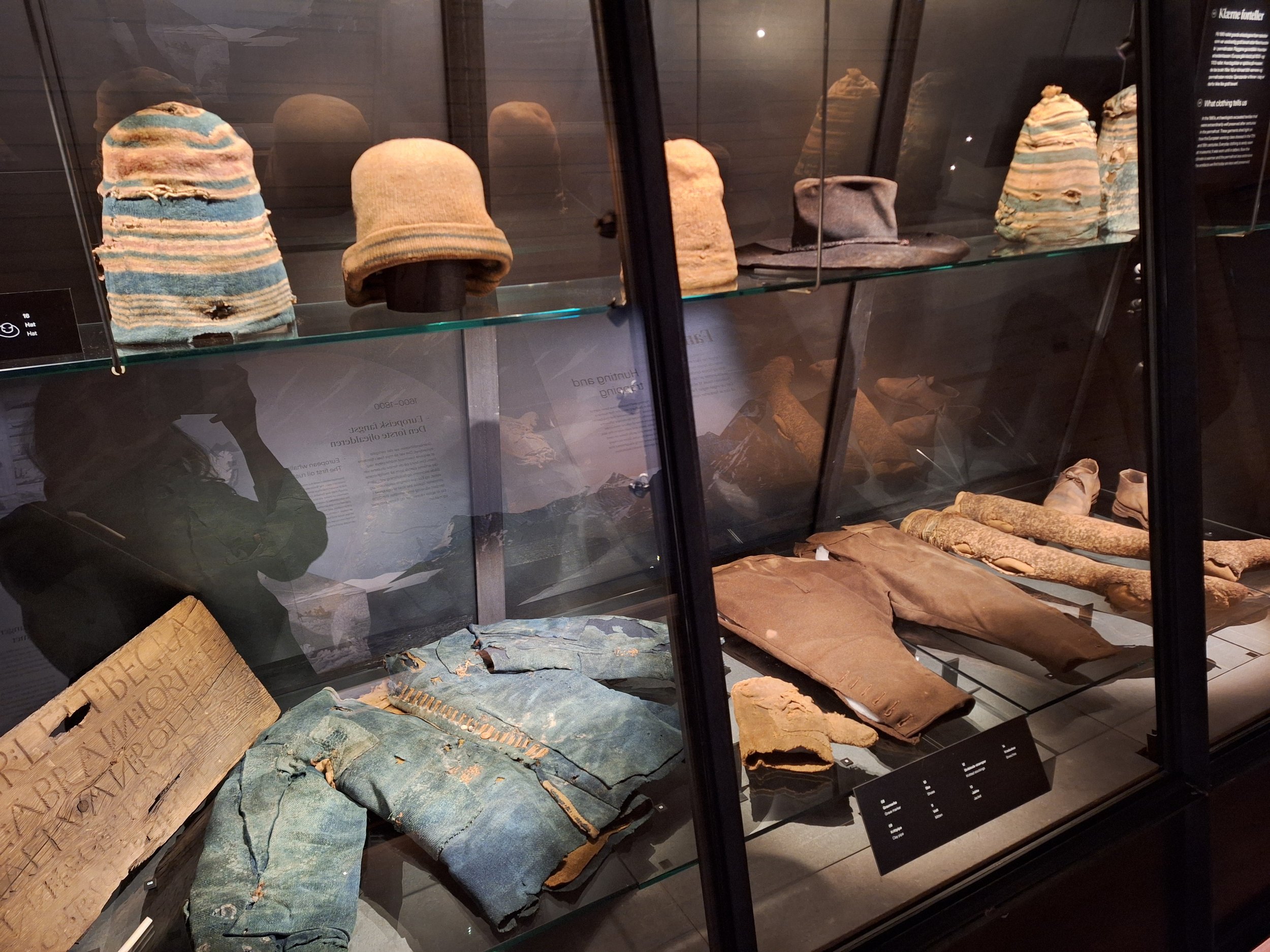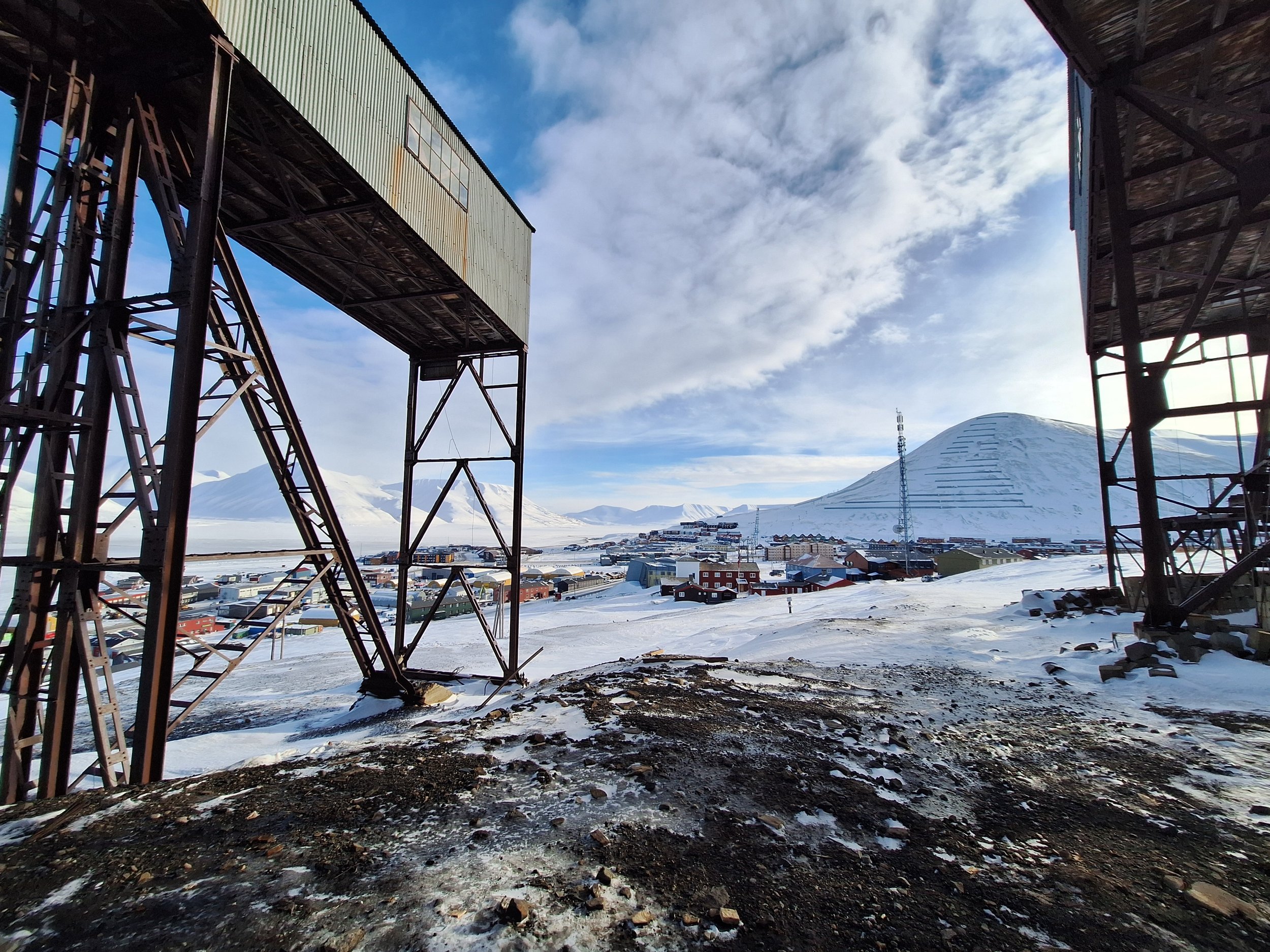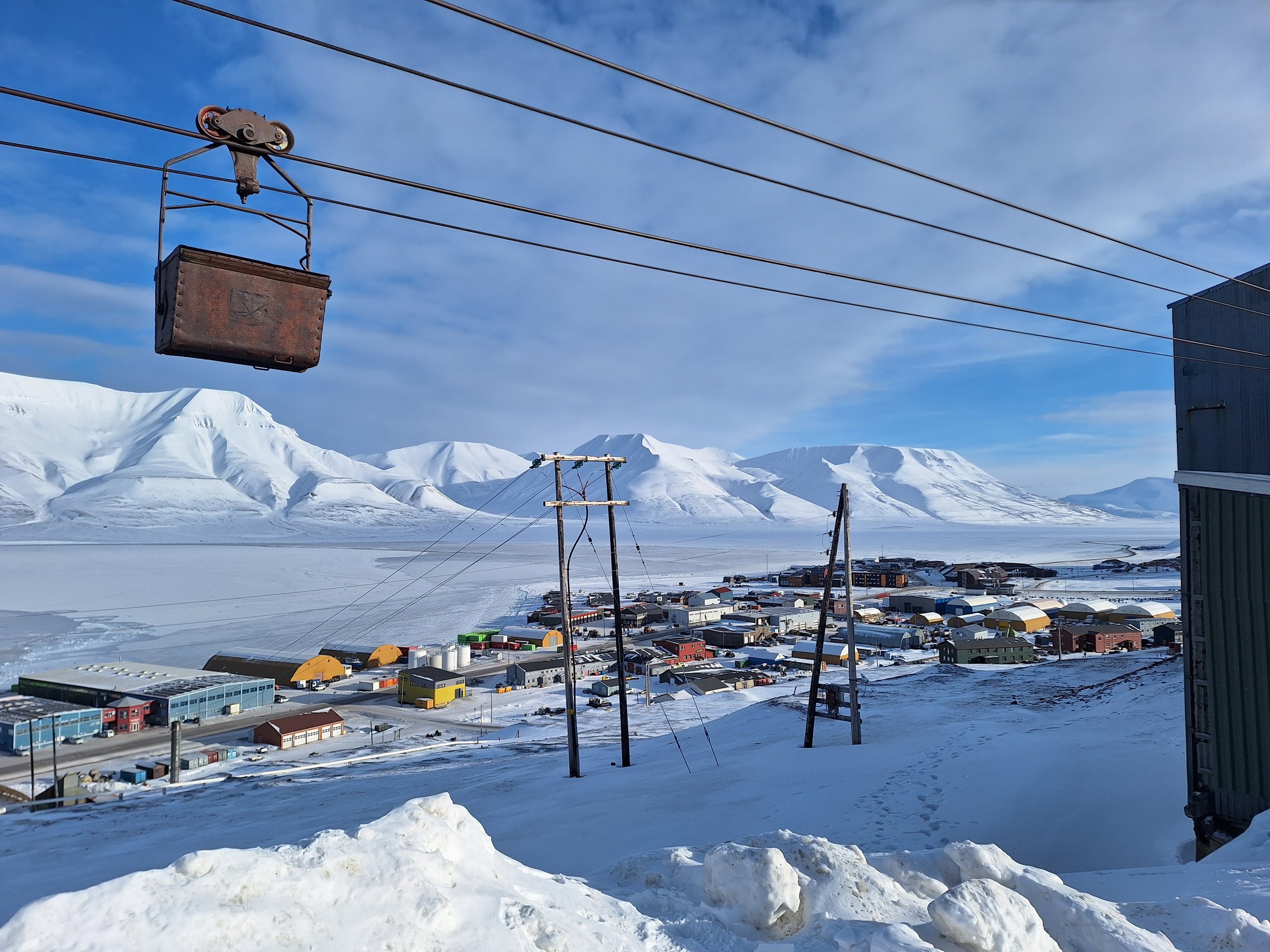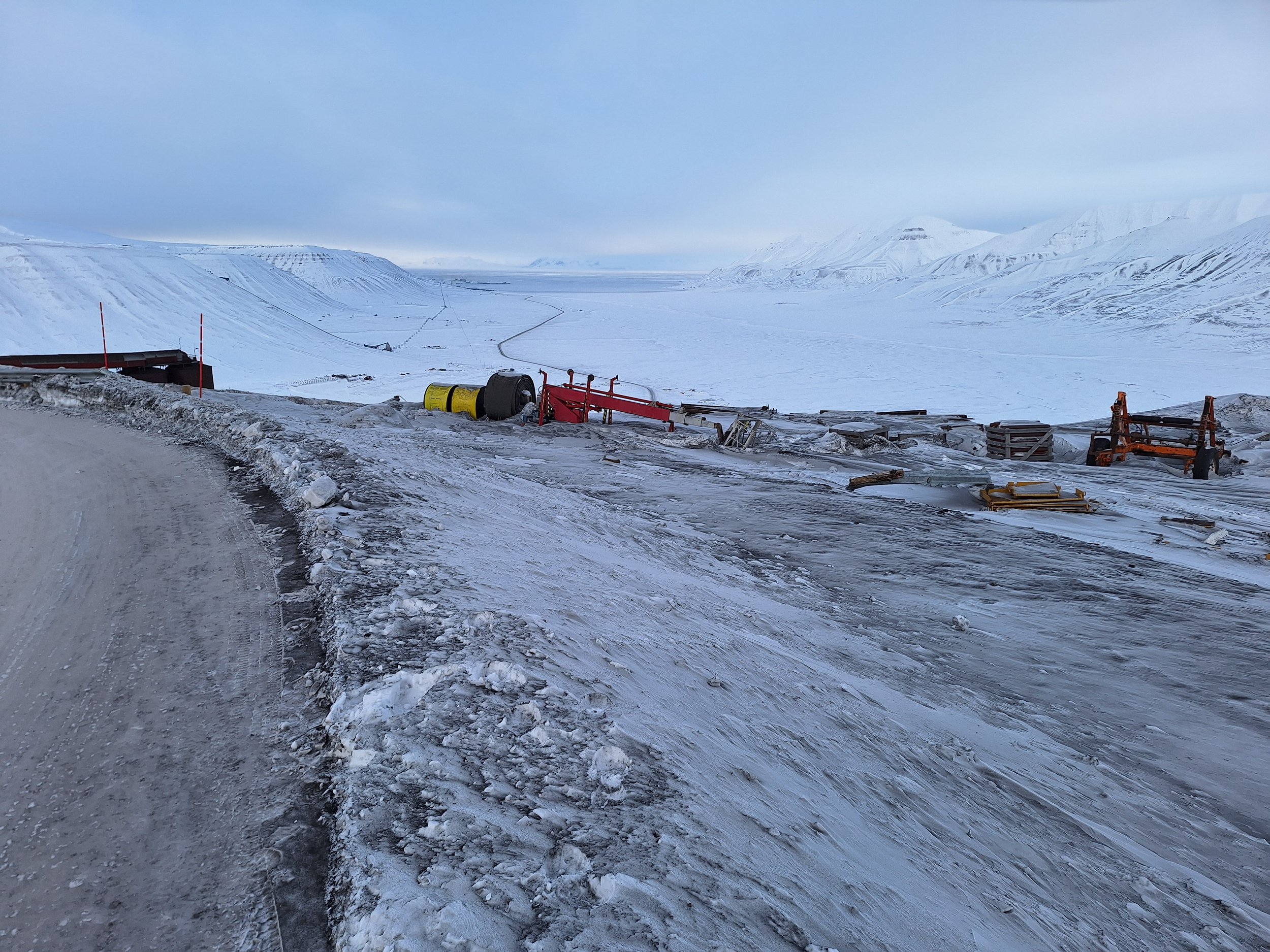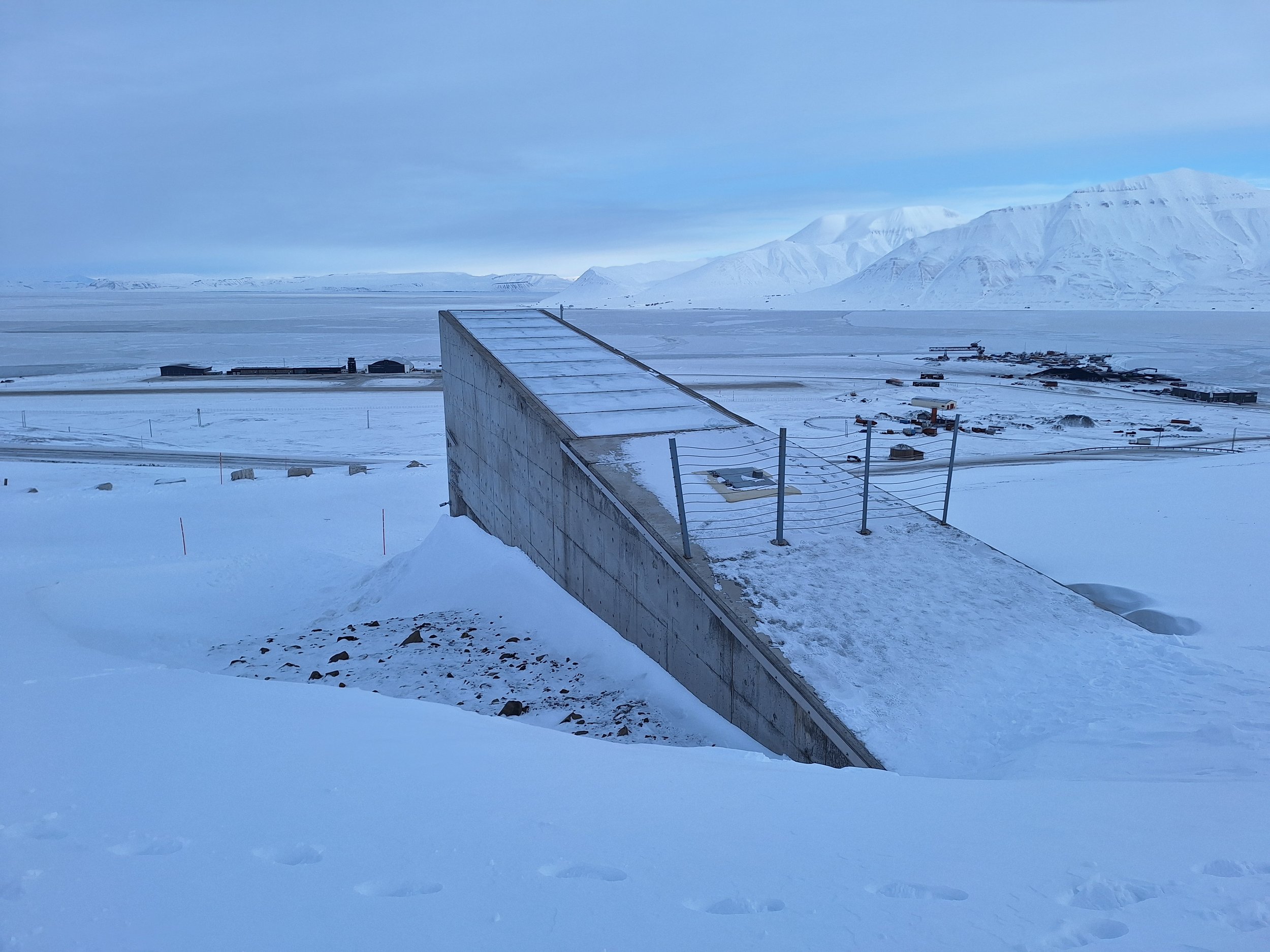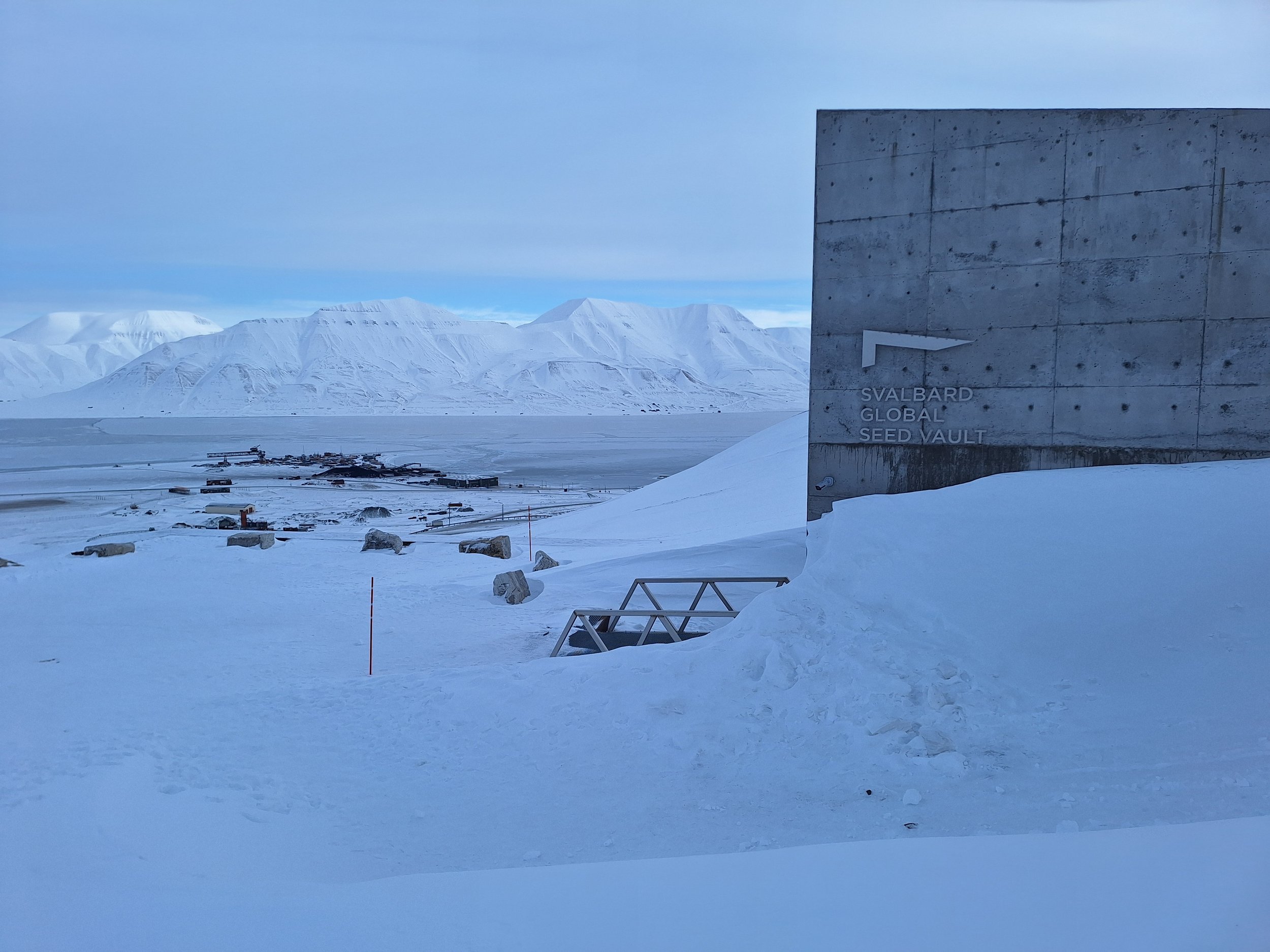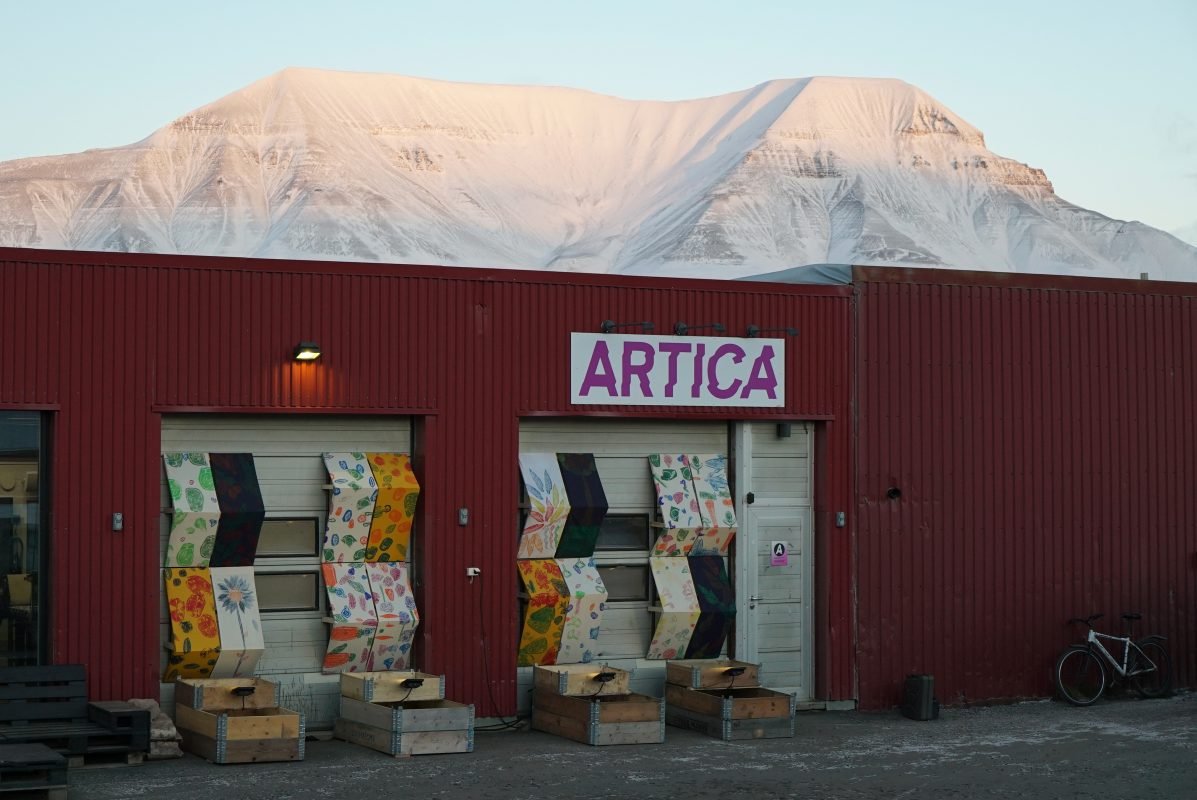I feel as if I have travelled to the edge of the world.
To make use of the current spell of sunshine, my residency colleague Ellen and I decided to go on a dog sledding tour to Bolterdalen, and then on an icy boat trip to Billefjord in the hopes of spotting some polar bears.
Going on a residency is about challenging oneself in so many ways. Not only artistically, but also in more indirect ways that might lead to new discoveries and directions in one’s projects. Growing up, I was always an indoor person. I wanted to sit alone, all by myself drawing or working on craft projects. Nature was, and is in some ways, still something that feels quite daunting for me to explore. I never had the right gear, the mentality, the physical stamina or frankly, the interest - even though my dad did try to instill cross-country skiing in me, and as every other Norwegian kid, I was forced out on semi-traumatizing nature hikes in inclement weather.
I decided that by coming to Svalbard, I would try to be a little bit less afraid. I would spend my money on proper outdoor gear and brave the cold. I would try to slowly become more comfortable in nature, and hopefully bring that mindset home with me. (After all, when you spend this much money on shoes and jackets, you want to get a lifetime of use out of them).
If you were to tell me a few years ago that I would be spending three months in Svalbard and trying my hands as a dog sled musher, I probably would not have believed you. While it was only a half-day excursion (I have to ease into this nature thing), I felt rather proud of myself. We went on an excursion with a family owned company called Green Dog. Having lived on Greenland before relocating to Svalbard, their dogs are a rather unique and beautiful mix of huskies and Greenland dogs. They are incredibly strong, but also sociable, playful and characterful. Never in my life have I met such happy, active and well-stimulated creatures - I think they lead a very happy life at Svalbard. While the landscapes were beautiful, the best part of the experience was definitely the animals, and learning how to handle them and cooperate with them. Not to mention meeting all the puppies at the end!
The next day, Ellen and I went on a full day boat trip to Billefjorden with the ship Billefjord - one of the few passenger vessels that is able to sail out from Longyearbyen and break through the ice at this time of year. While the ice prevents us from getting close to land, the icy waters also offer a greater opportunity for spotting some of Svalbard’s amazing wildlife. I felt so fortunate, and so humbled, to spot both walrus and seals basking in the sun on big chunks of ice - and not to mention spotting a polar bear (!) walking along the edge of the mountain! To see one is a huge and rare privilege. I had to take most of my mobile phone photos through my binoculars, as the animals were quite a distance away. That did not matter though - it is how it should be. The less we disturb them the better, and from an artistic point of view, I quite liked the retro analogue vibe of the images. I also managed to get some stellar nature shots, which I will probably use as reference in some of my prints going forward.
After a day’s respite, our residency coordinator Lisa took us up on a snowy hike to Sarkofagen, a hill looking out over Longyearbyen at 500 meters above sea level. This must have been my first mountain hike since primary school, and for this urban gal, trekking up the mountain in ankle deep snow was very physically demanding. As we were outside the safety zone, we had to carry a rifle to protect ourselves upon potential polar bear encounters. Although such episodes are rare, one has to be alert - polar bears can be everywhere and nowhere at the same time. Despite the snowy, foggy weather and the lack of clear views, the whole trip itself was worth it, as we also got to explore an ice cave underneath the Longyear glacier! The oldest of the ice is thousands of years old, and holds the earth’s memory through trapped plants and sediments. With the ice rapidly melting in the Arctic regions, geologists are rushing to collect samples before it is too late.
I promised myself before coming to Svalbard that I would not be drawing mountains, because that would feel like such an obvious route to go down. Besides, I have never considered myself much of a landscape artist. But lo and behold, this is where we are at now…. I will probably go deeper into my current project in a separate blog post later, but lets just say nature becomes a bit of a metaphor for human conditions in these images.
